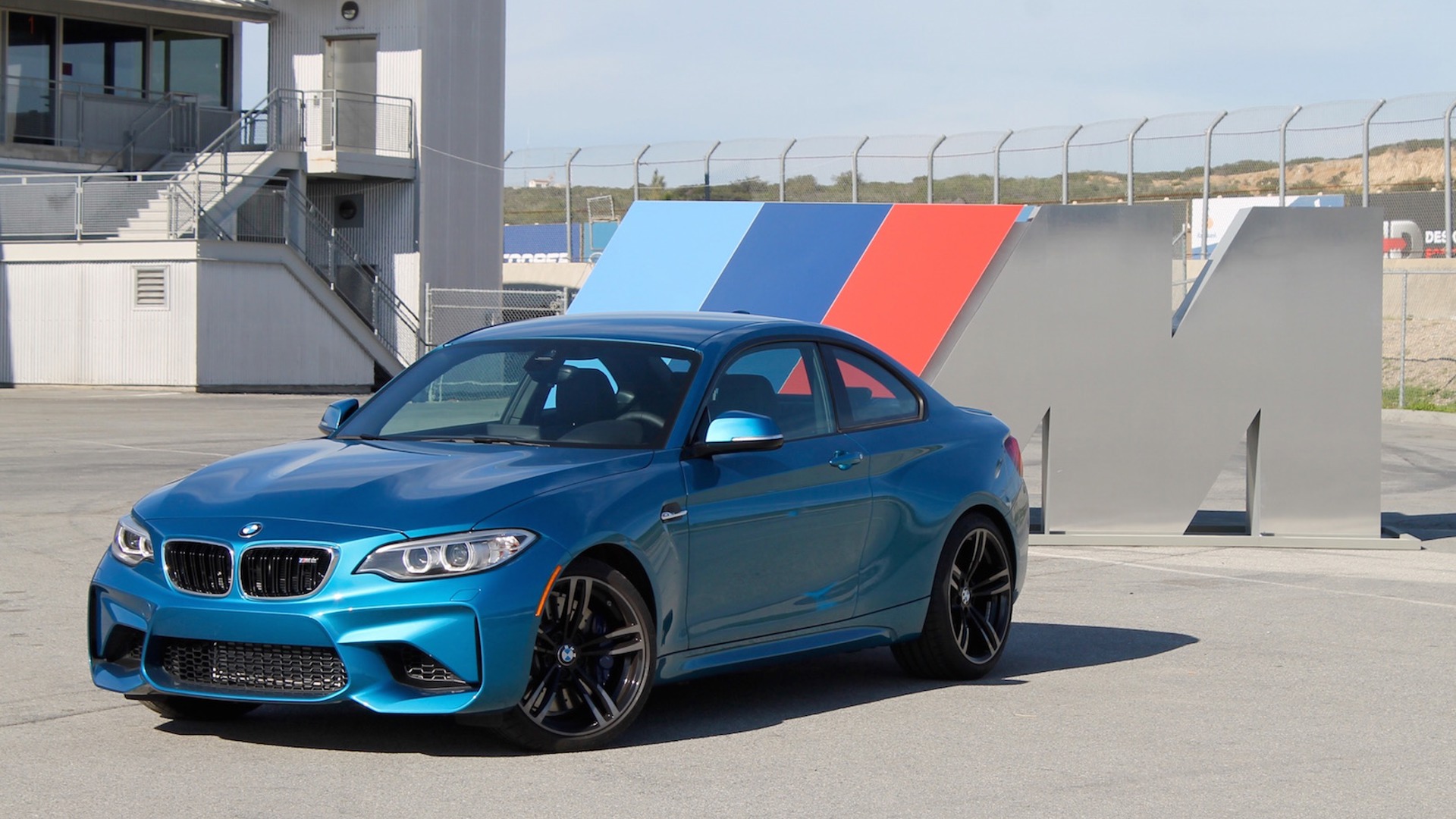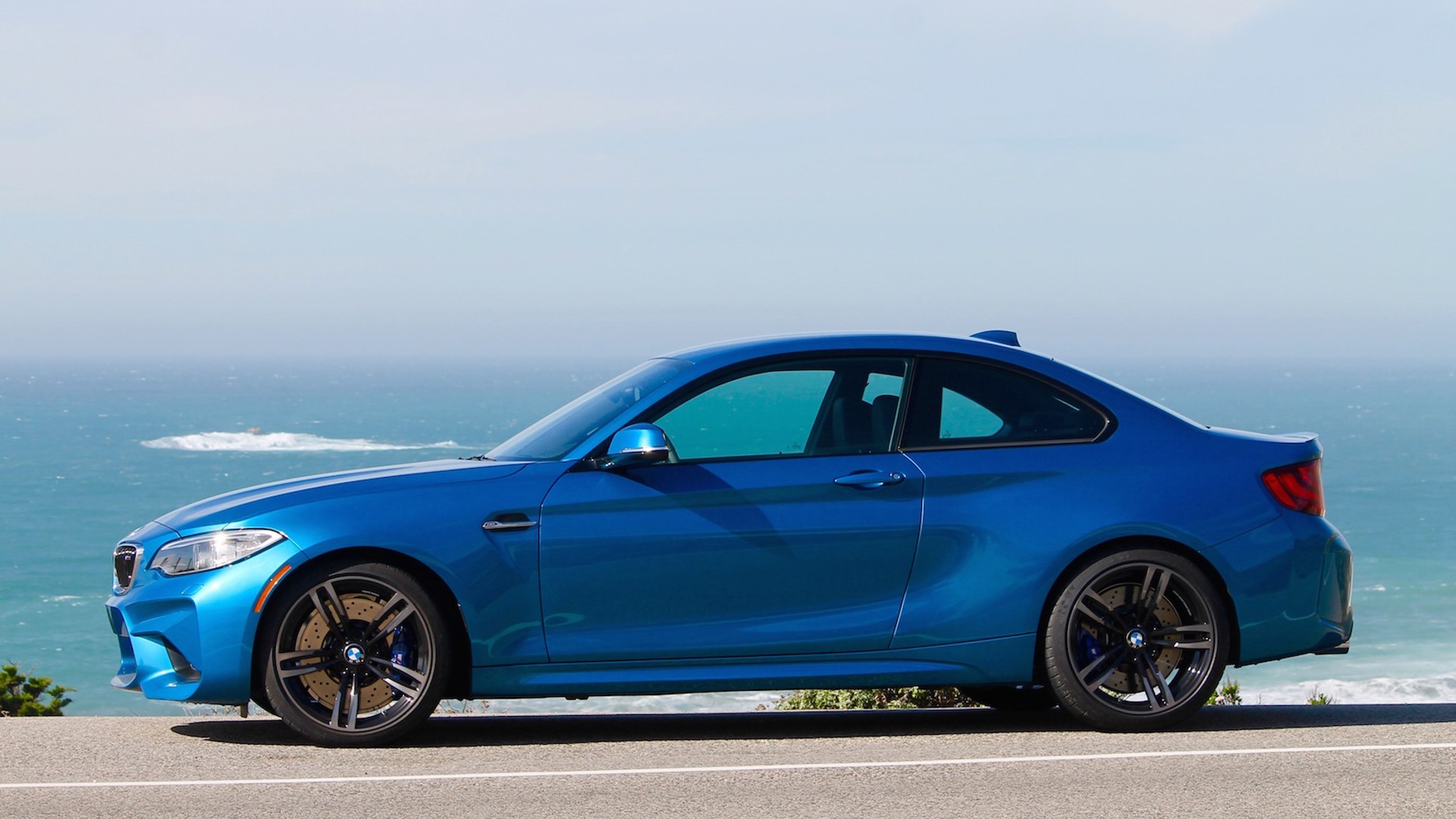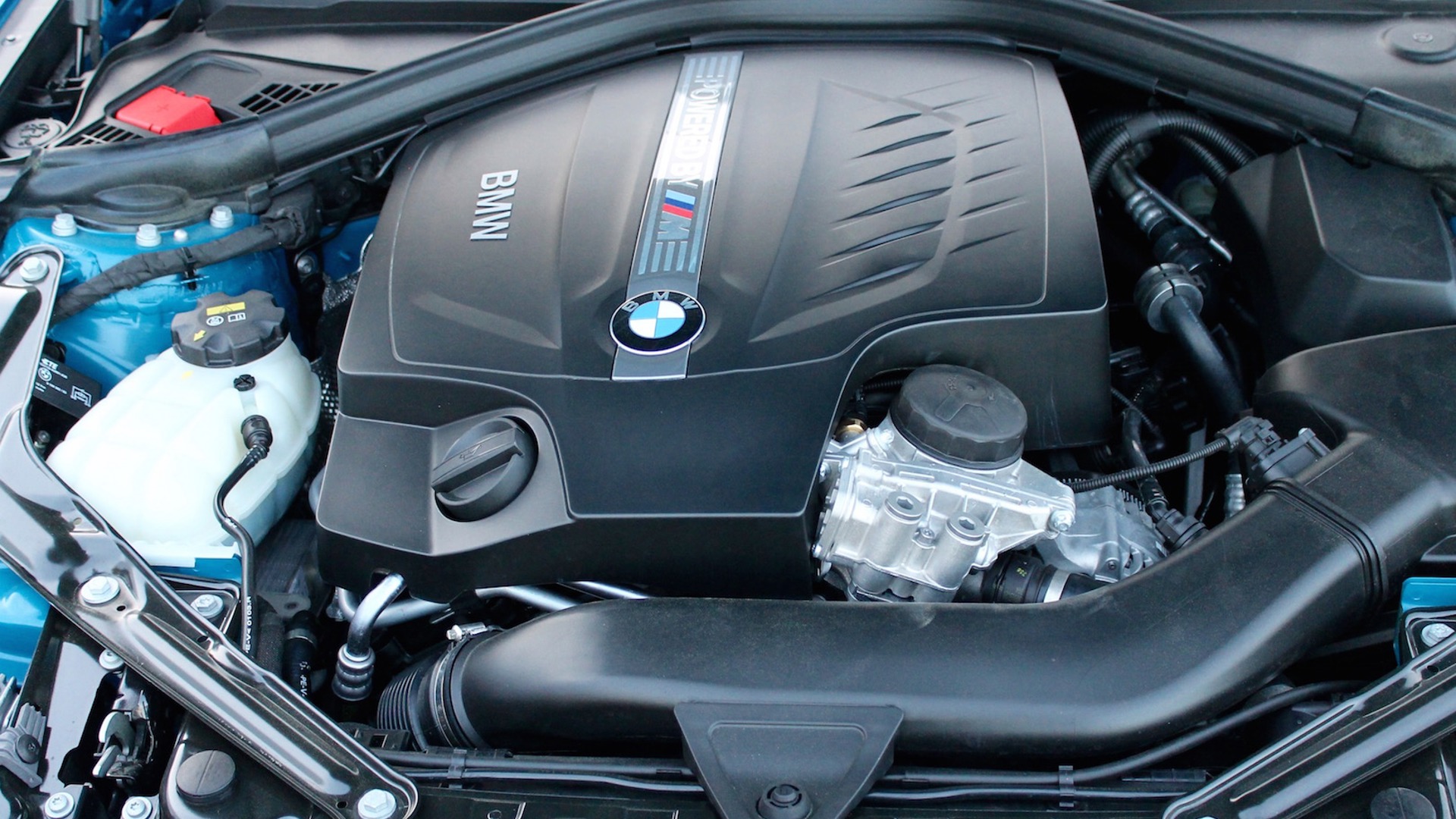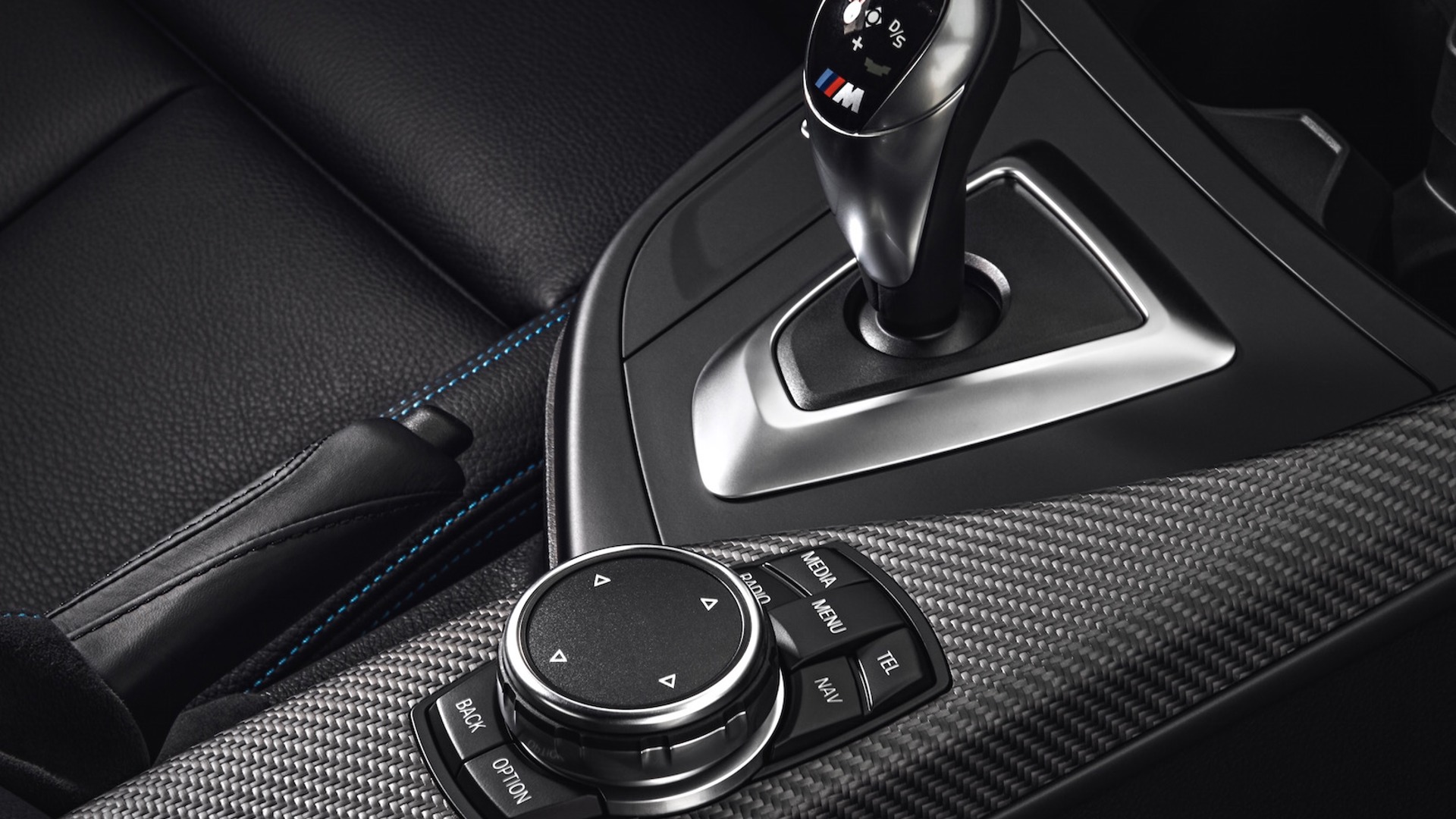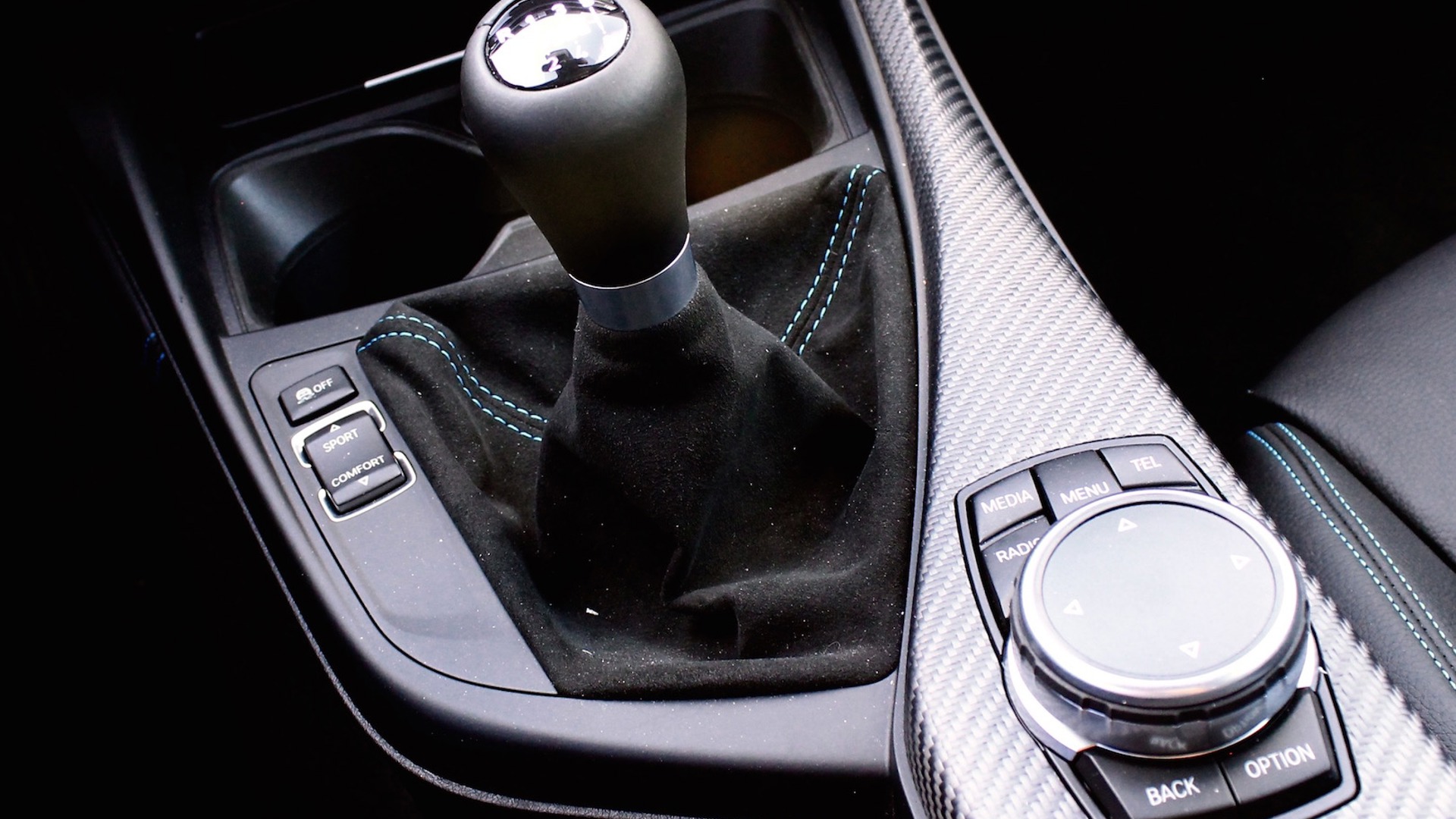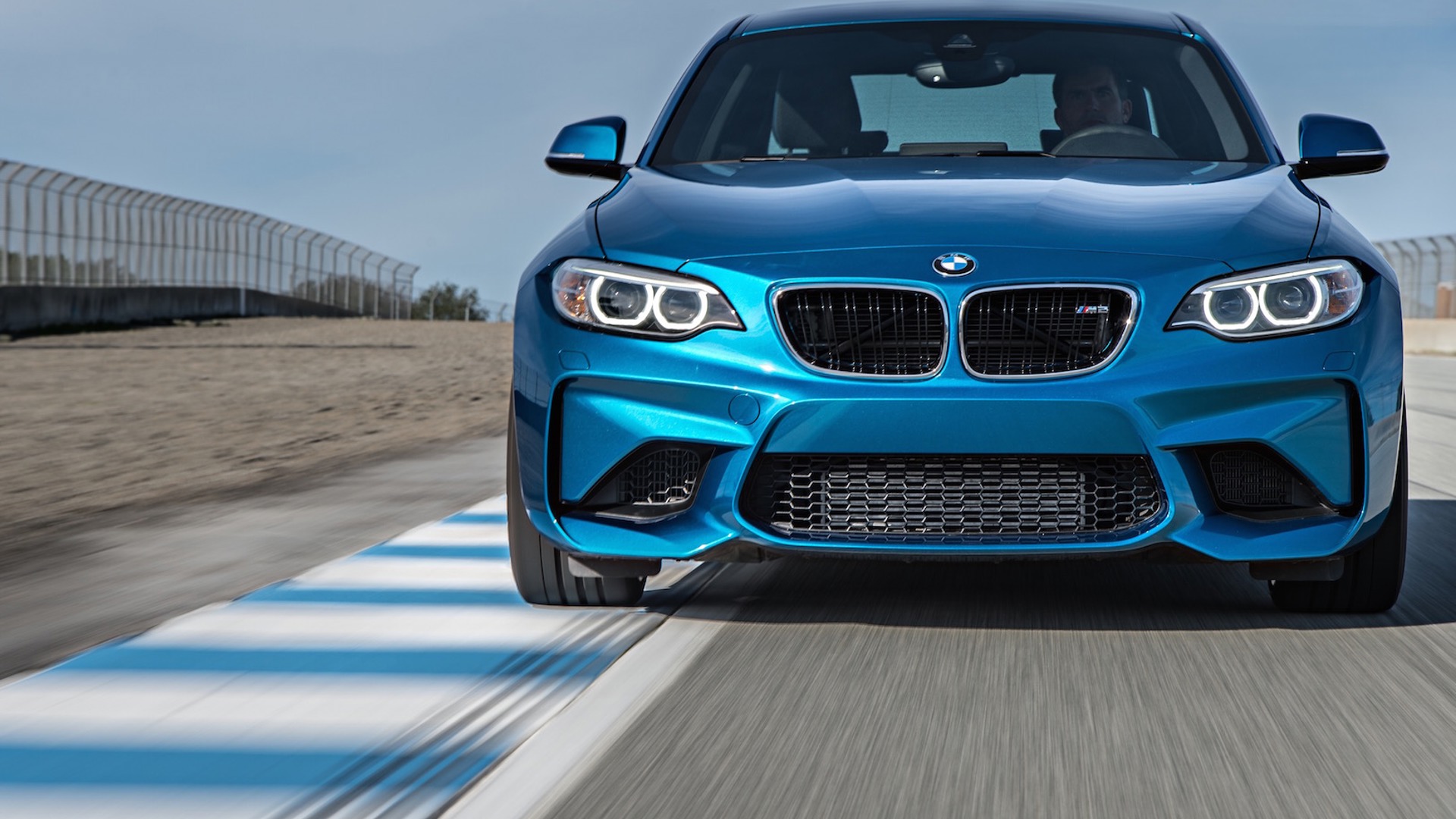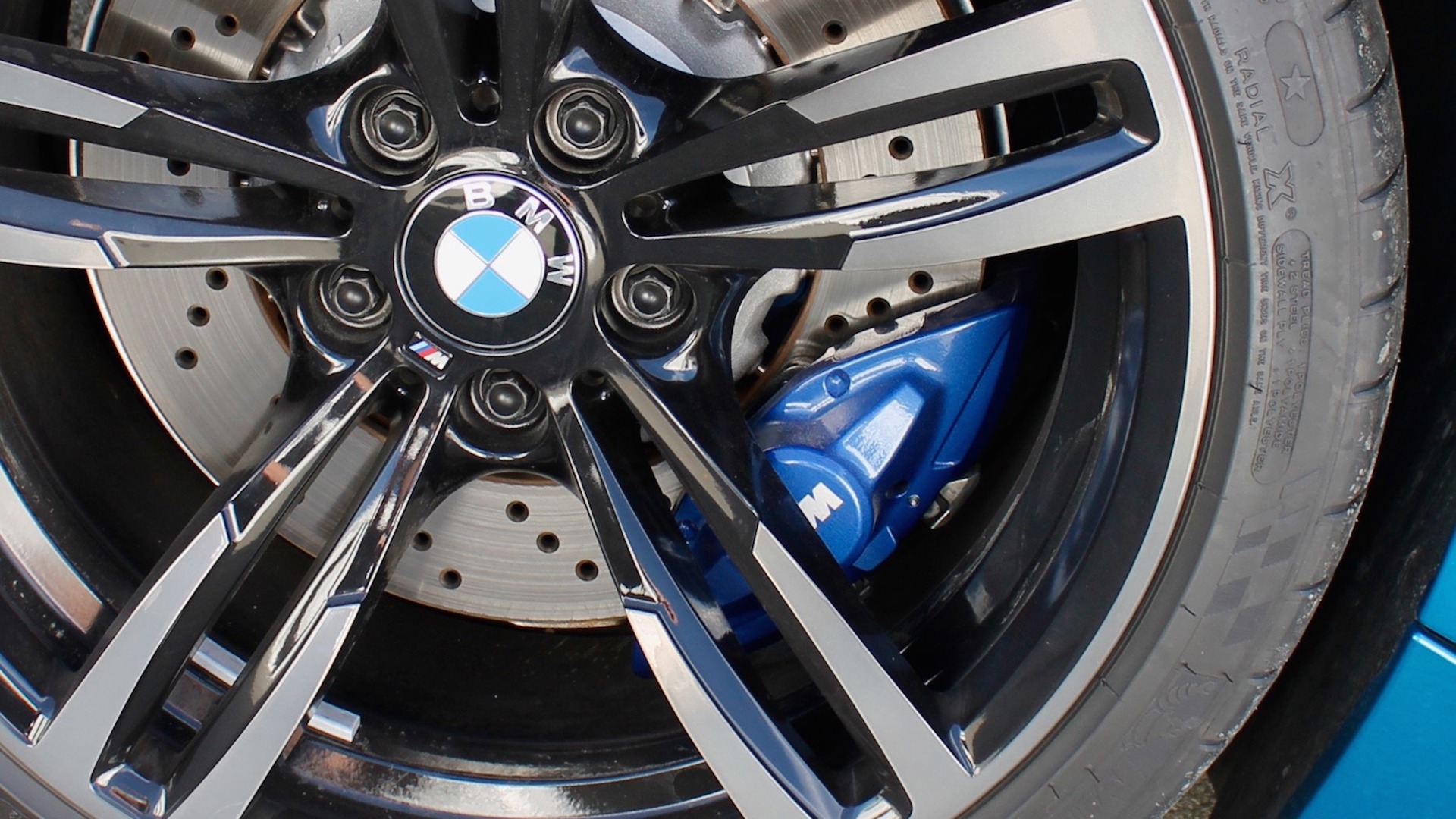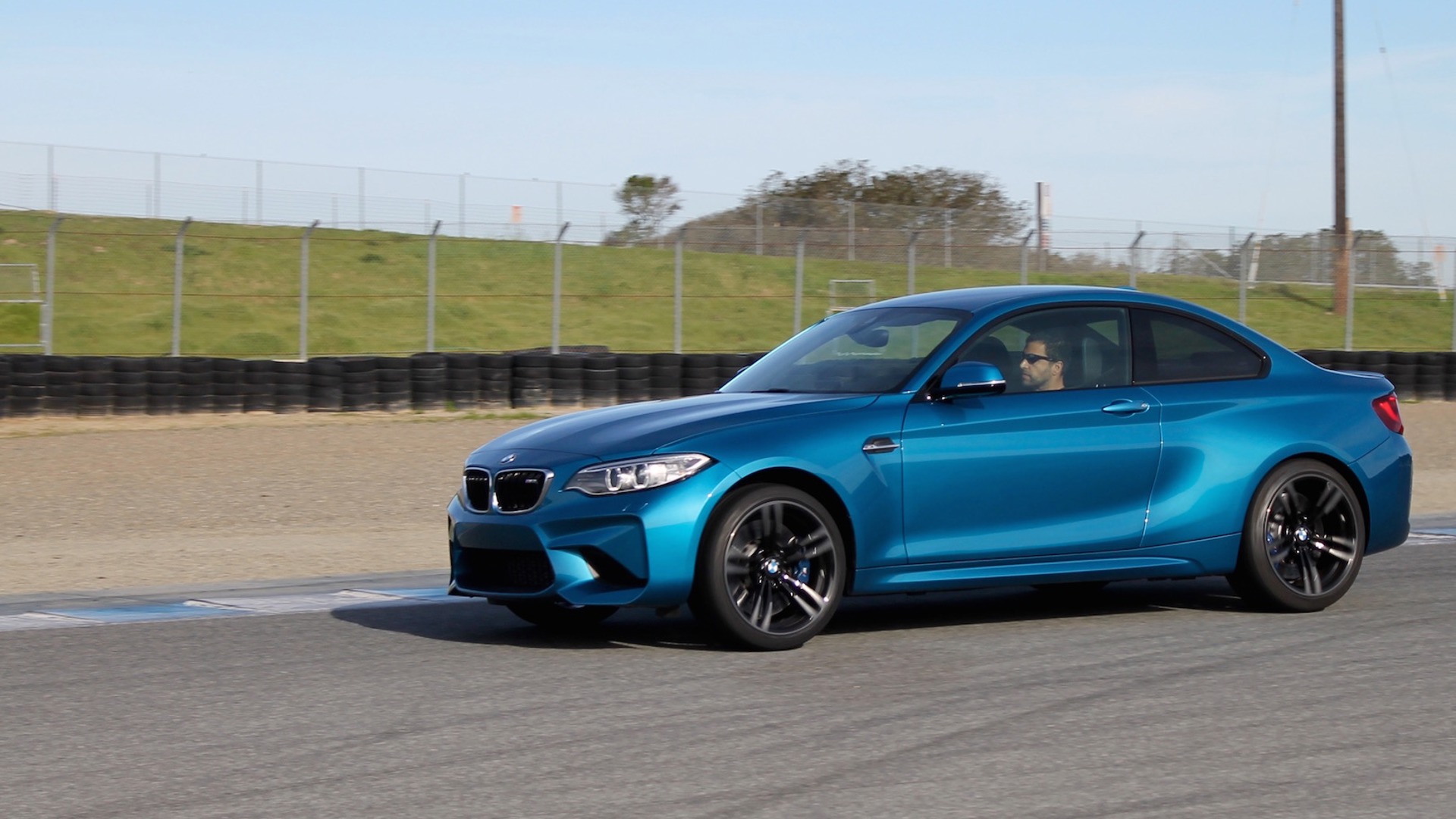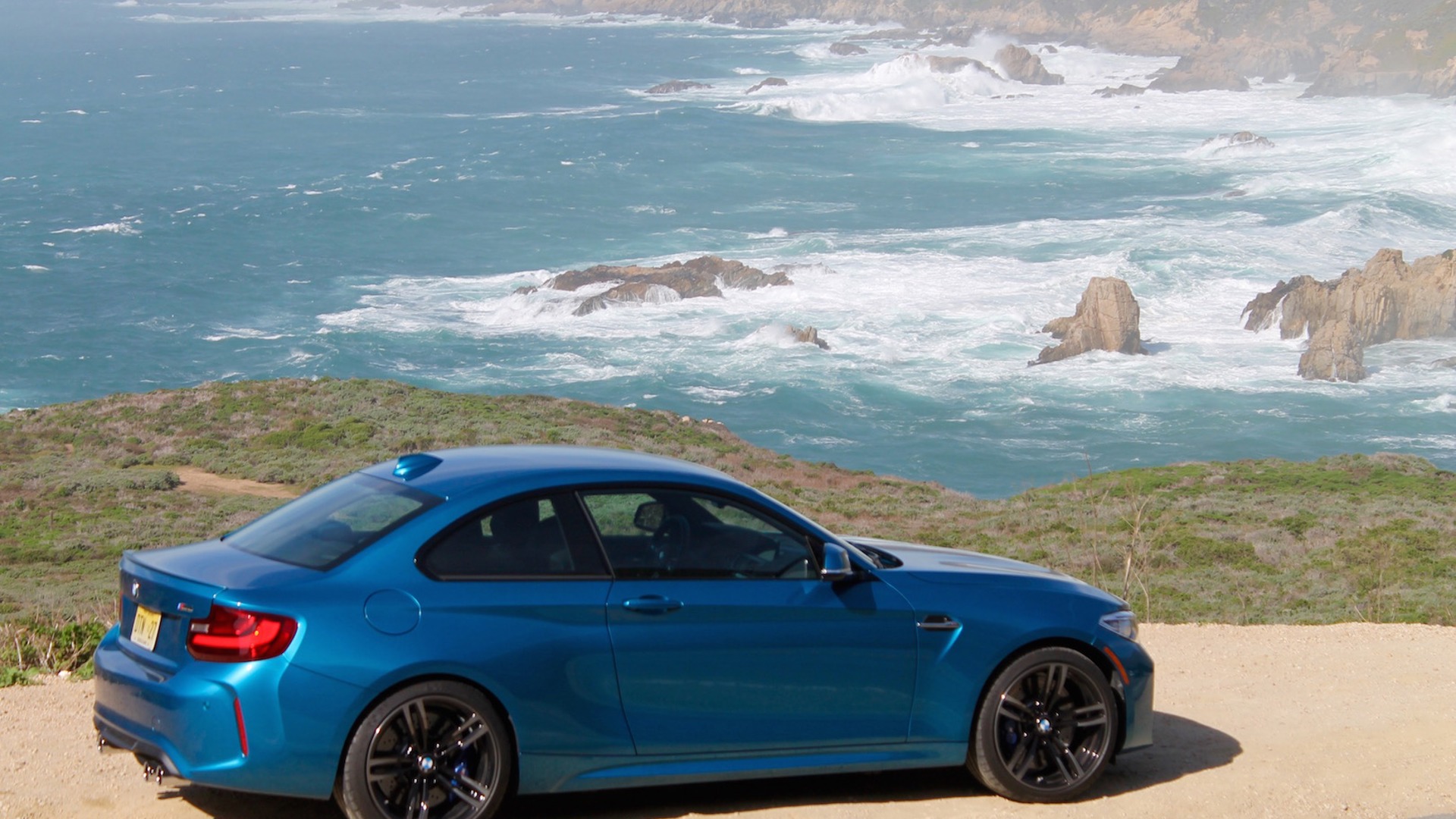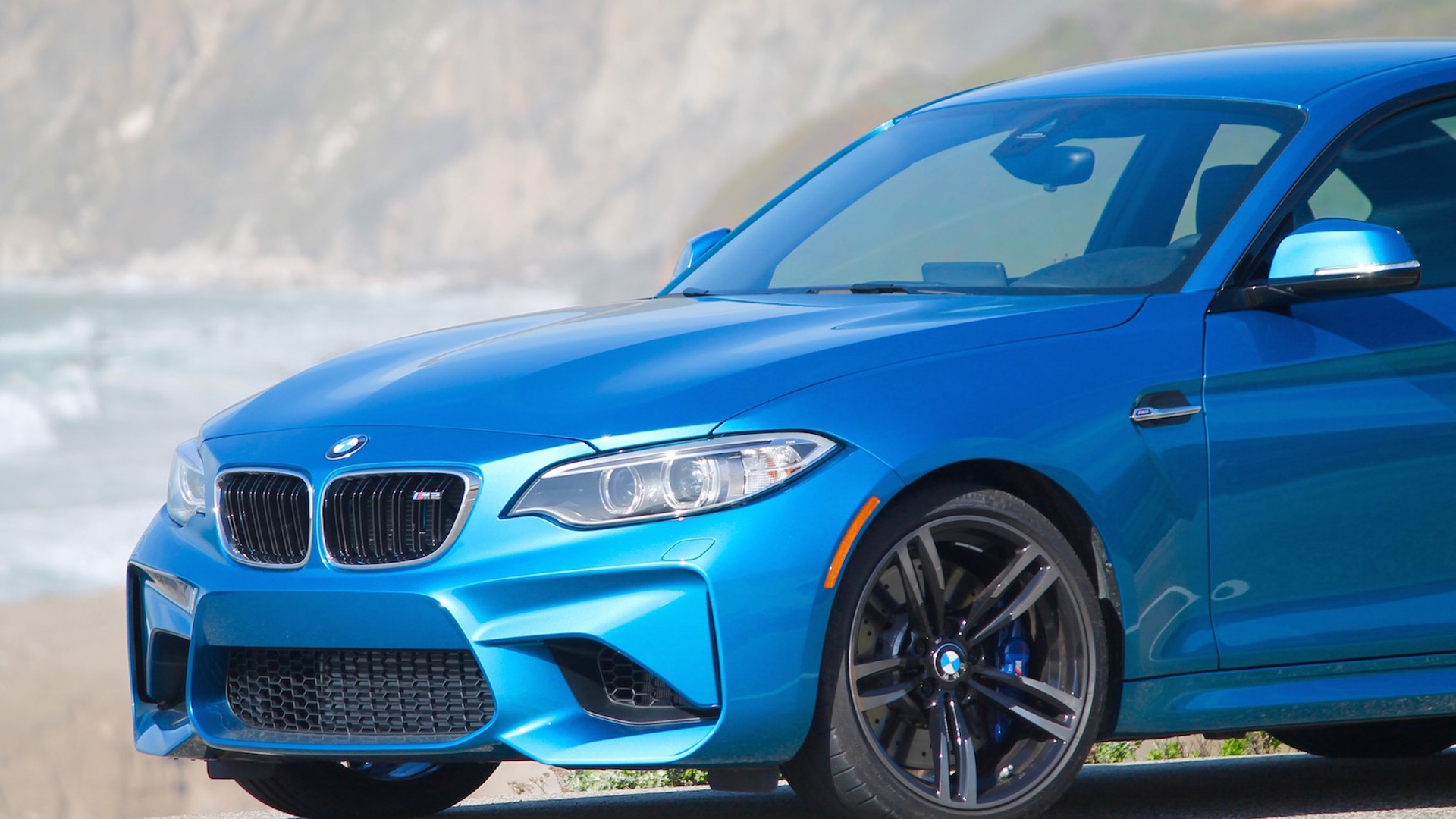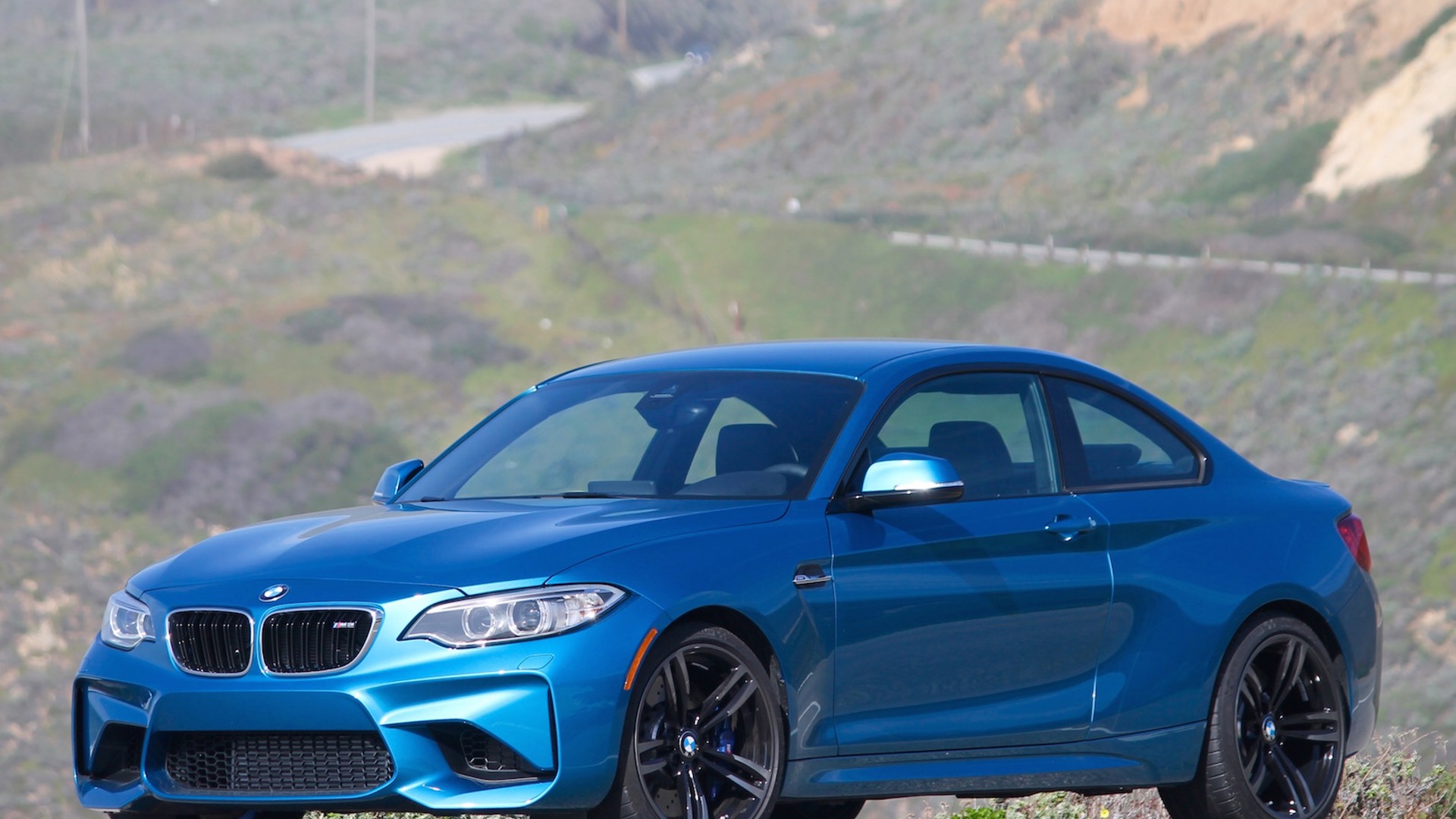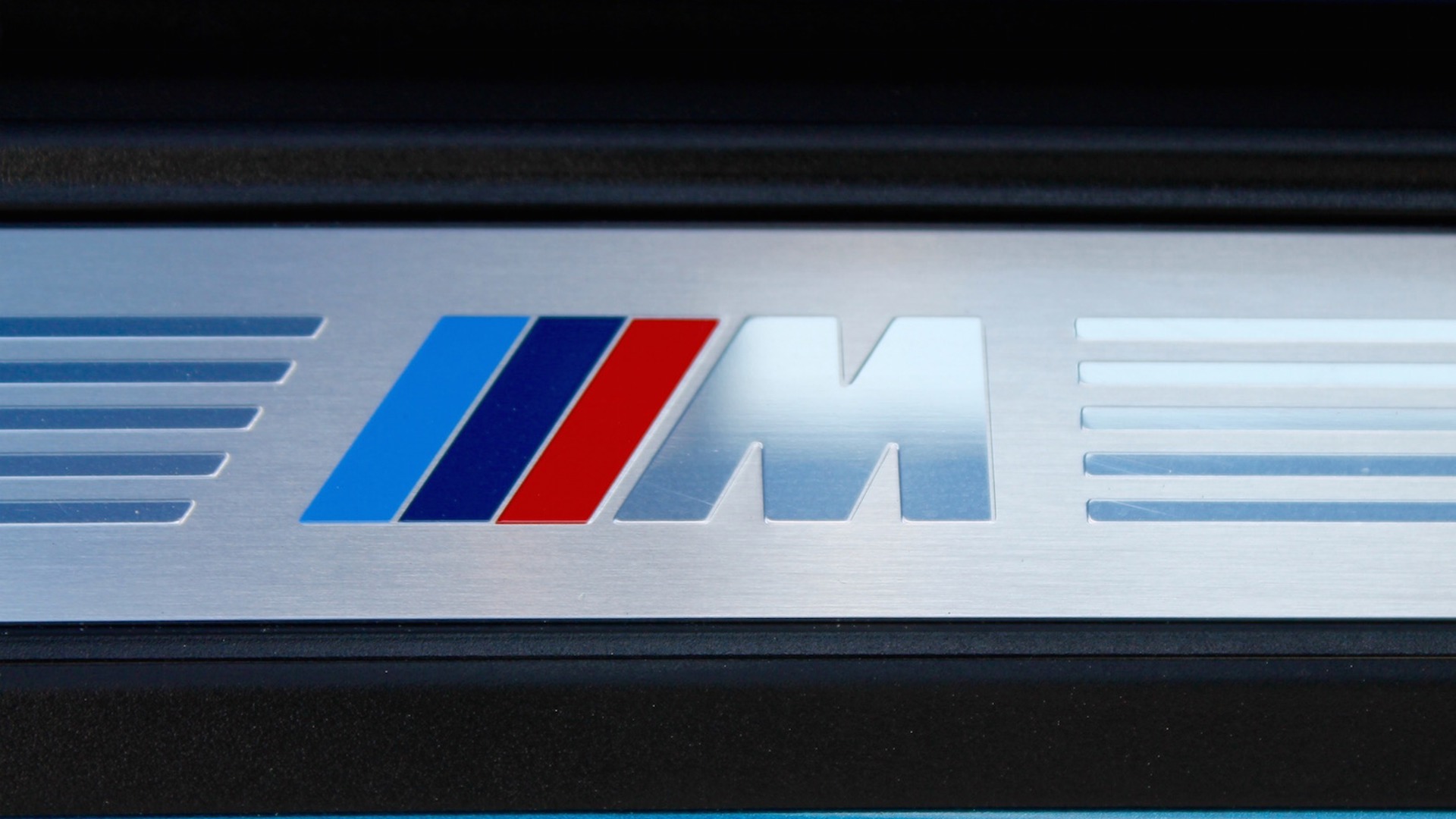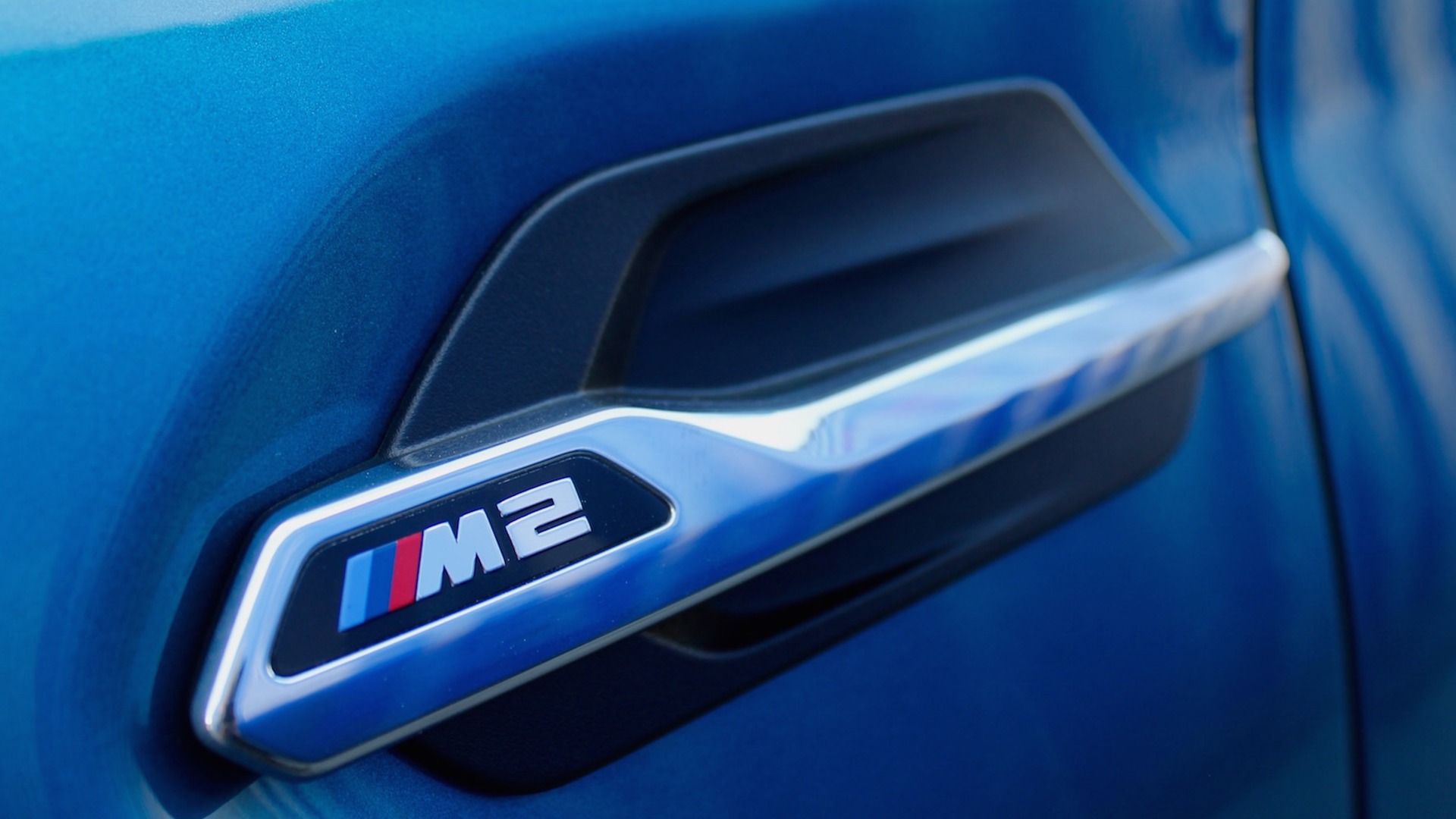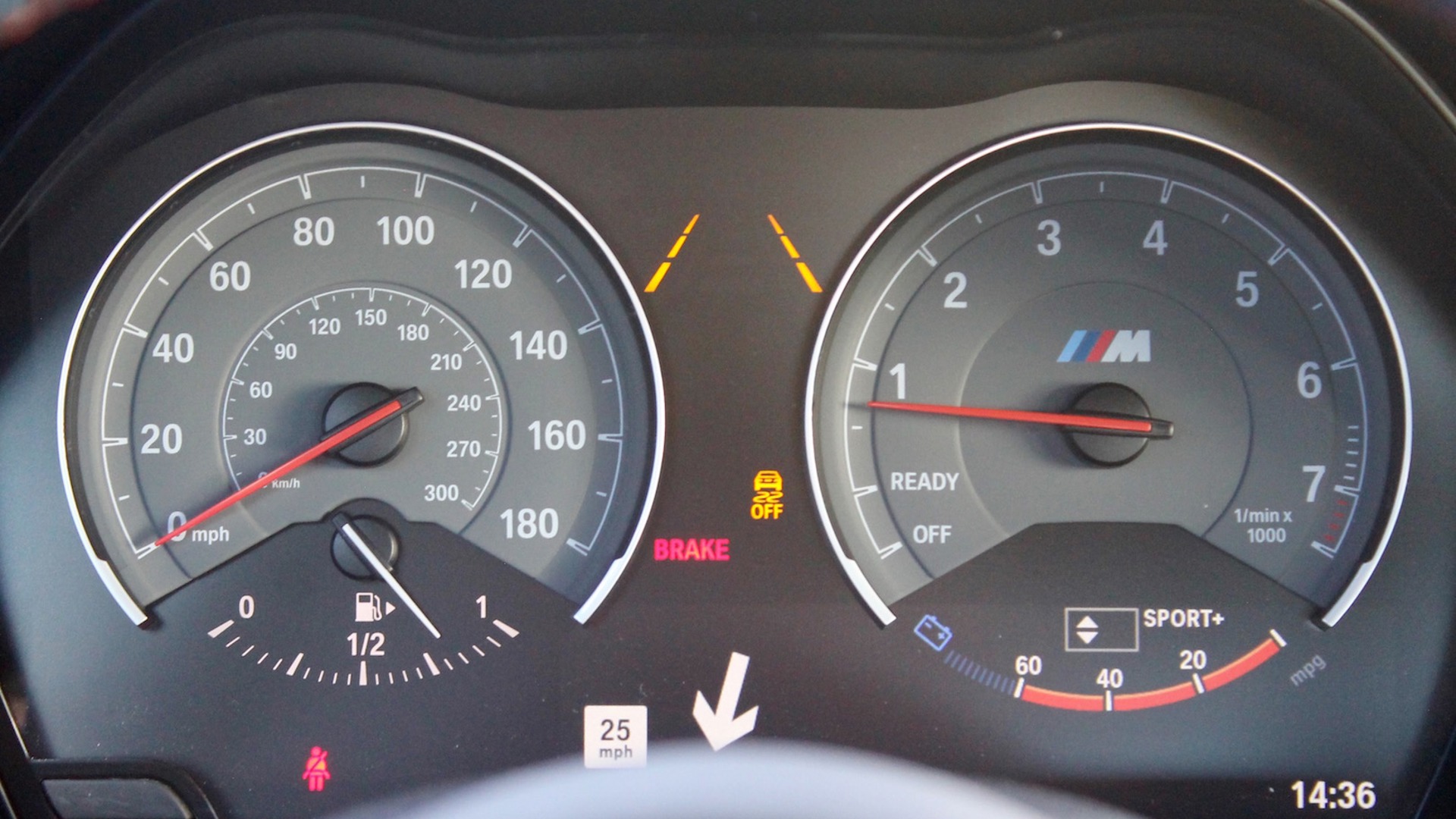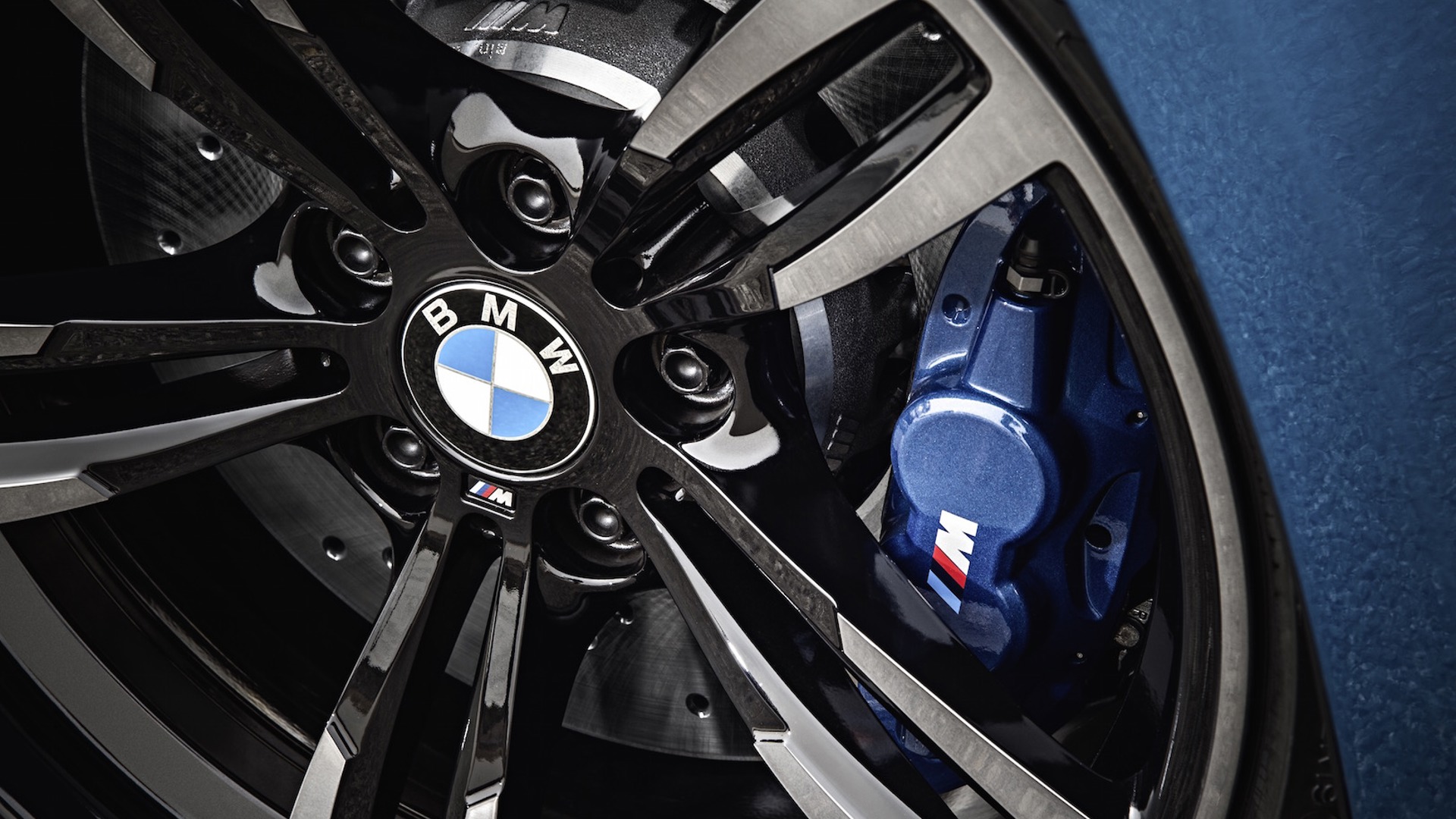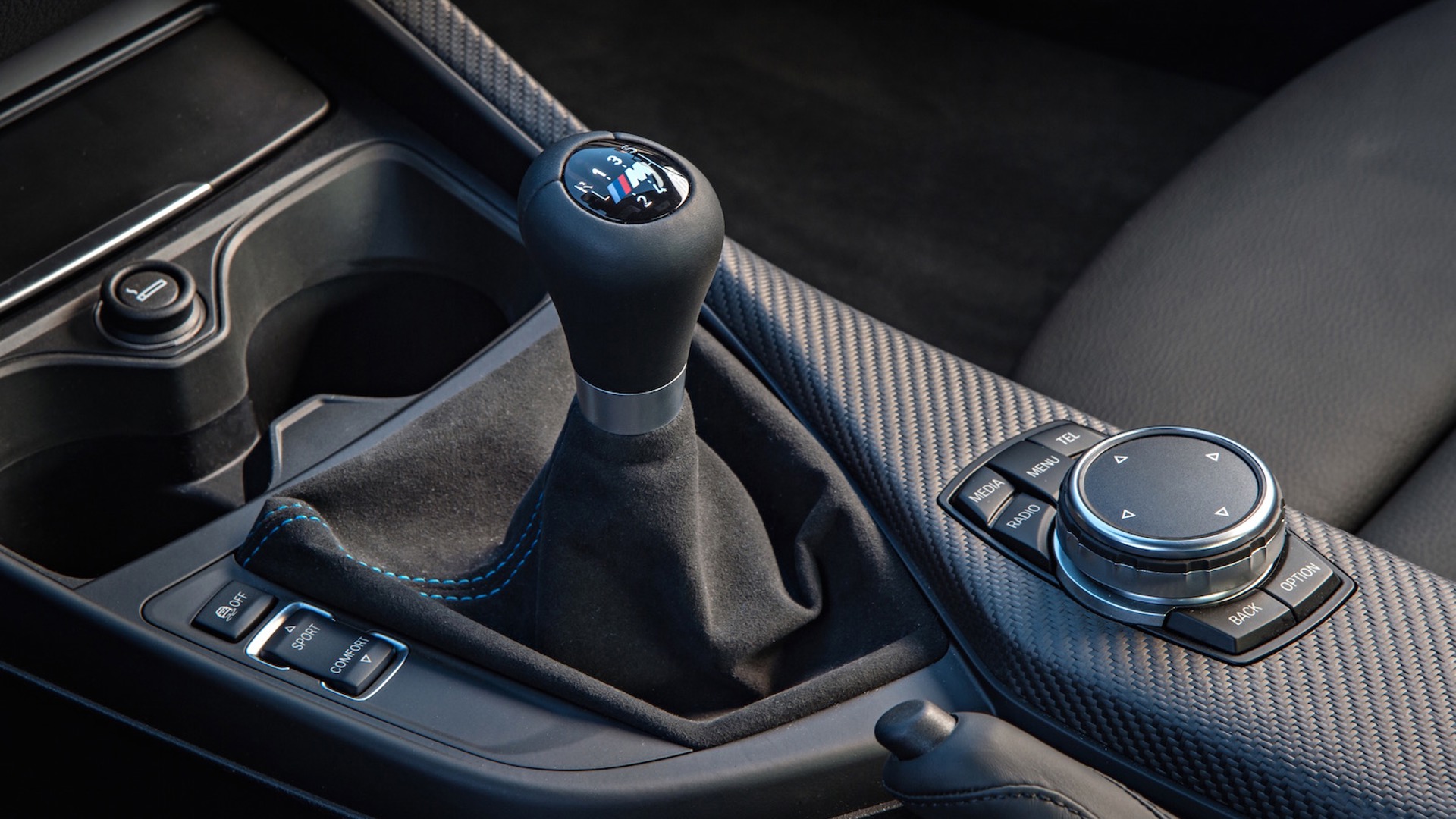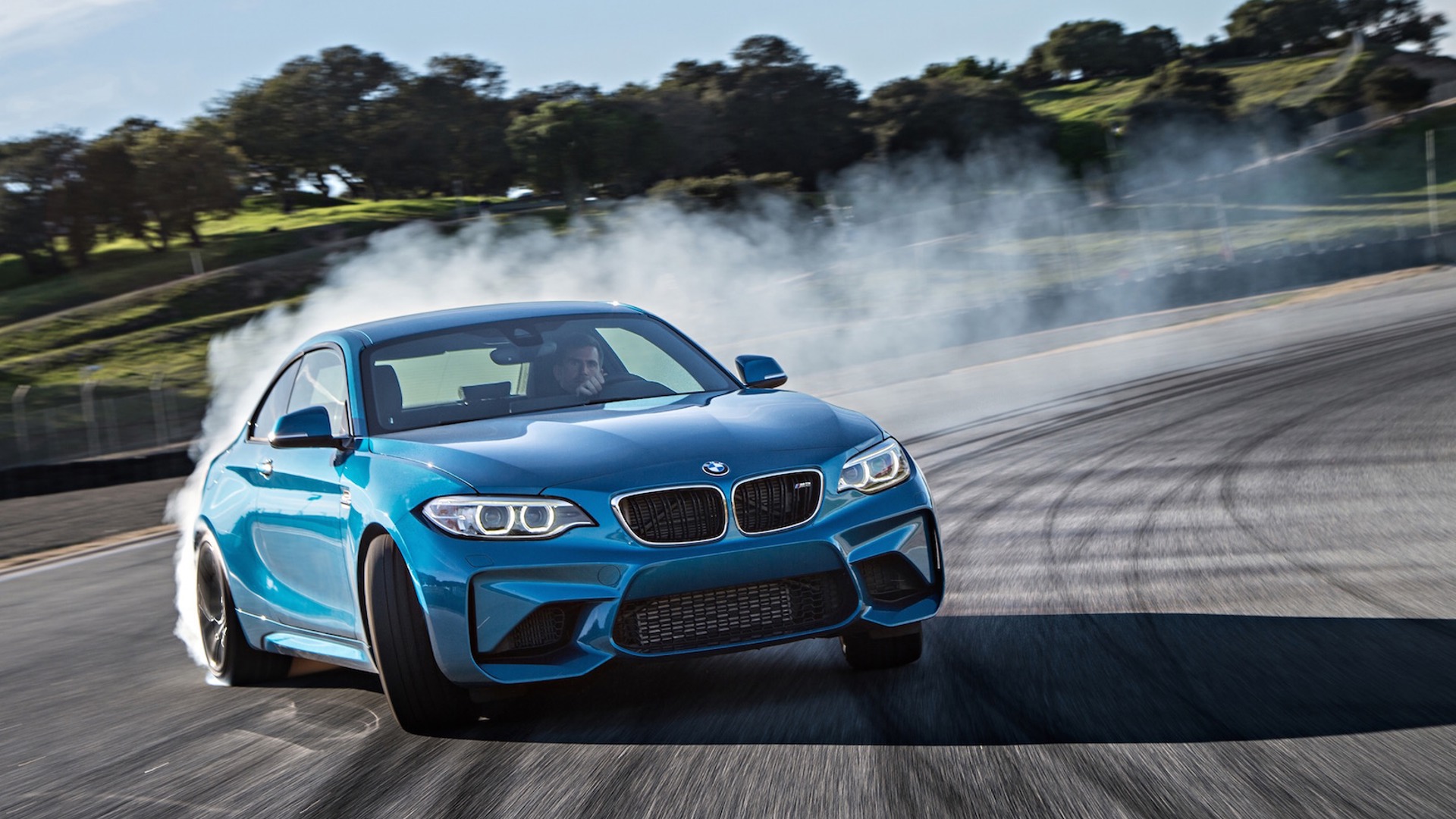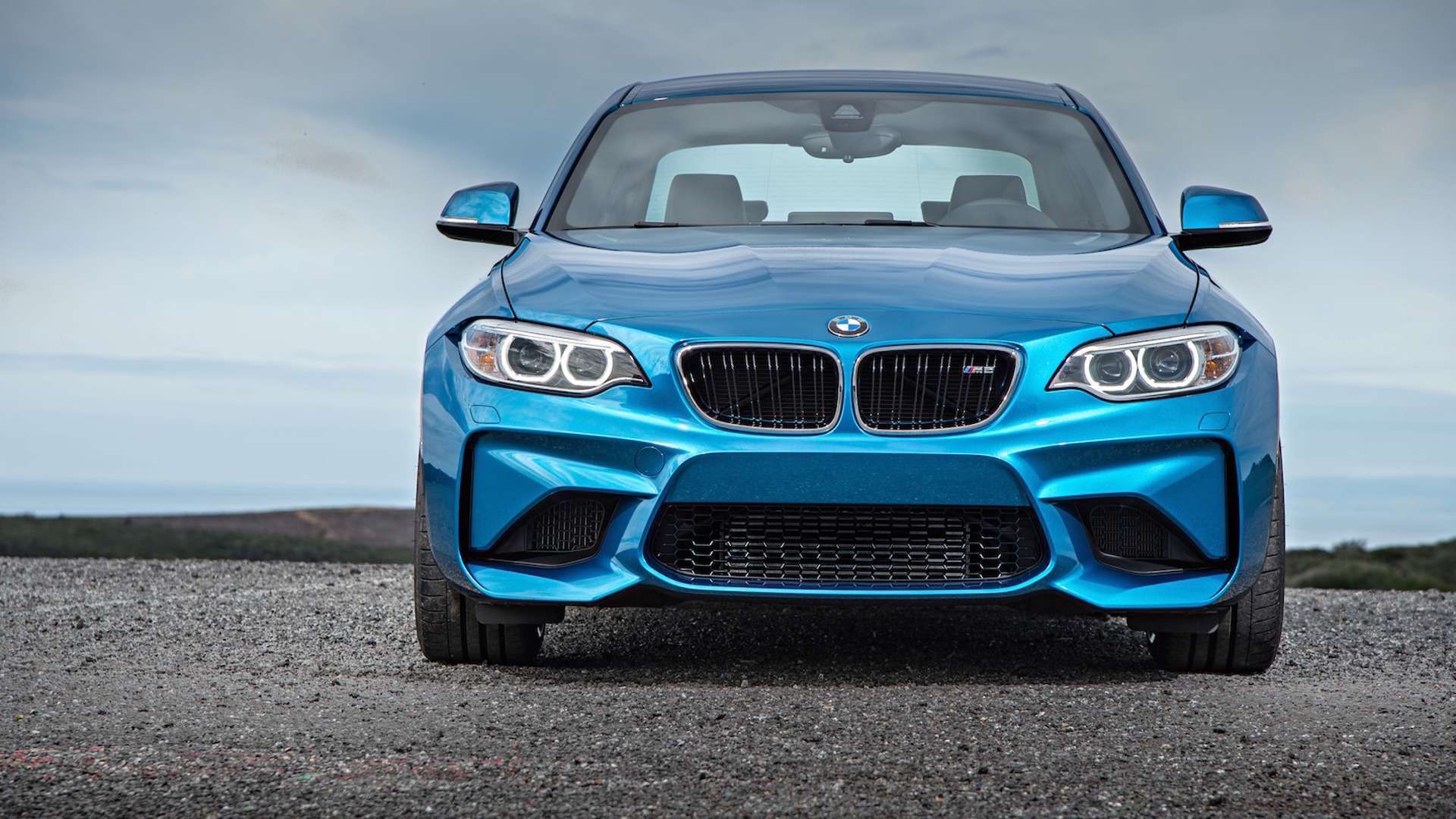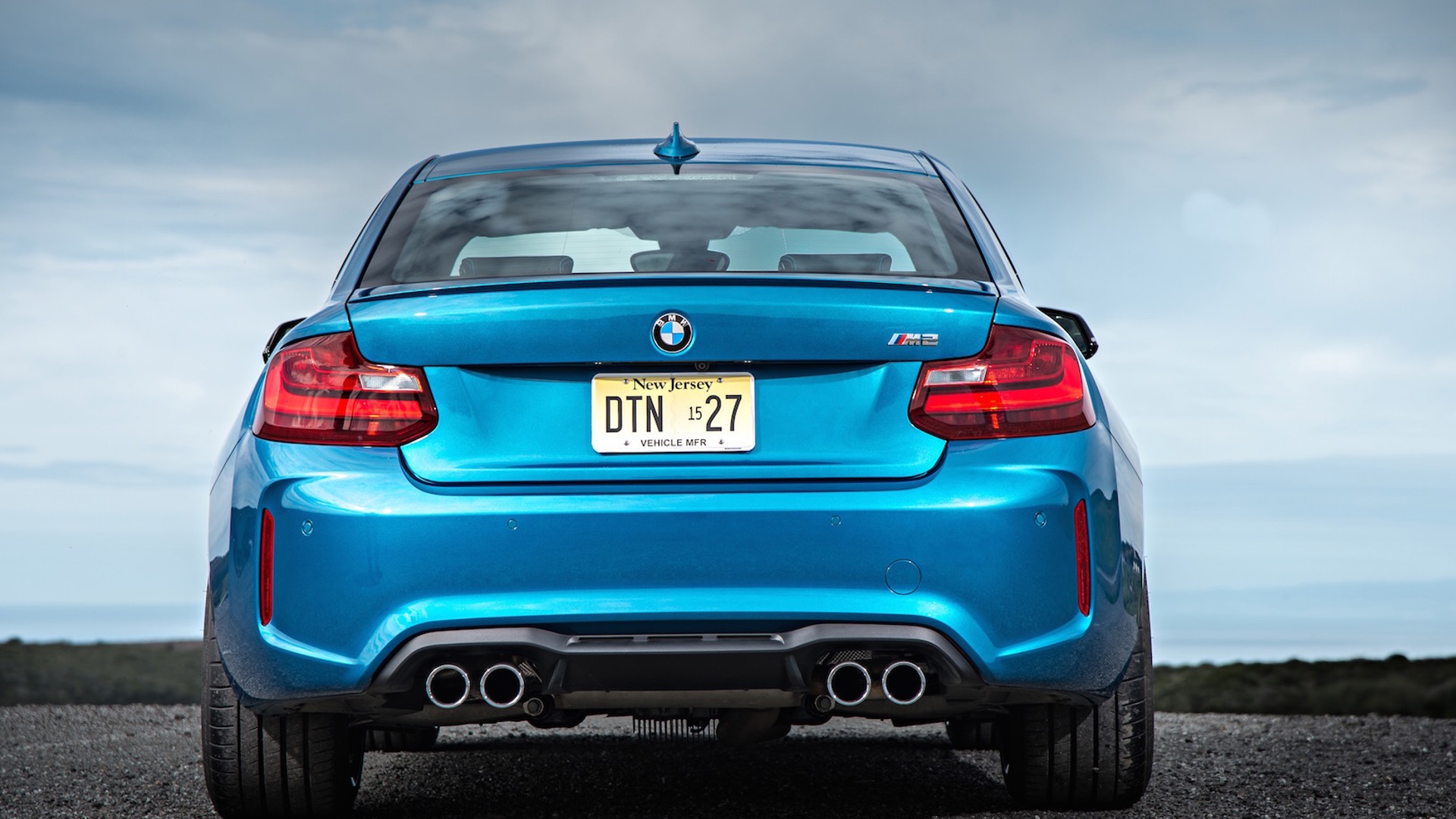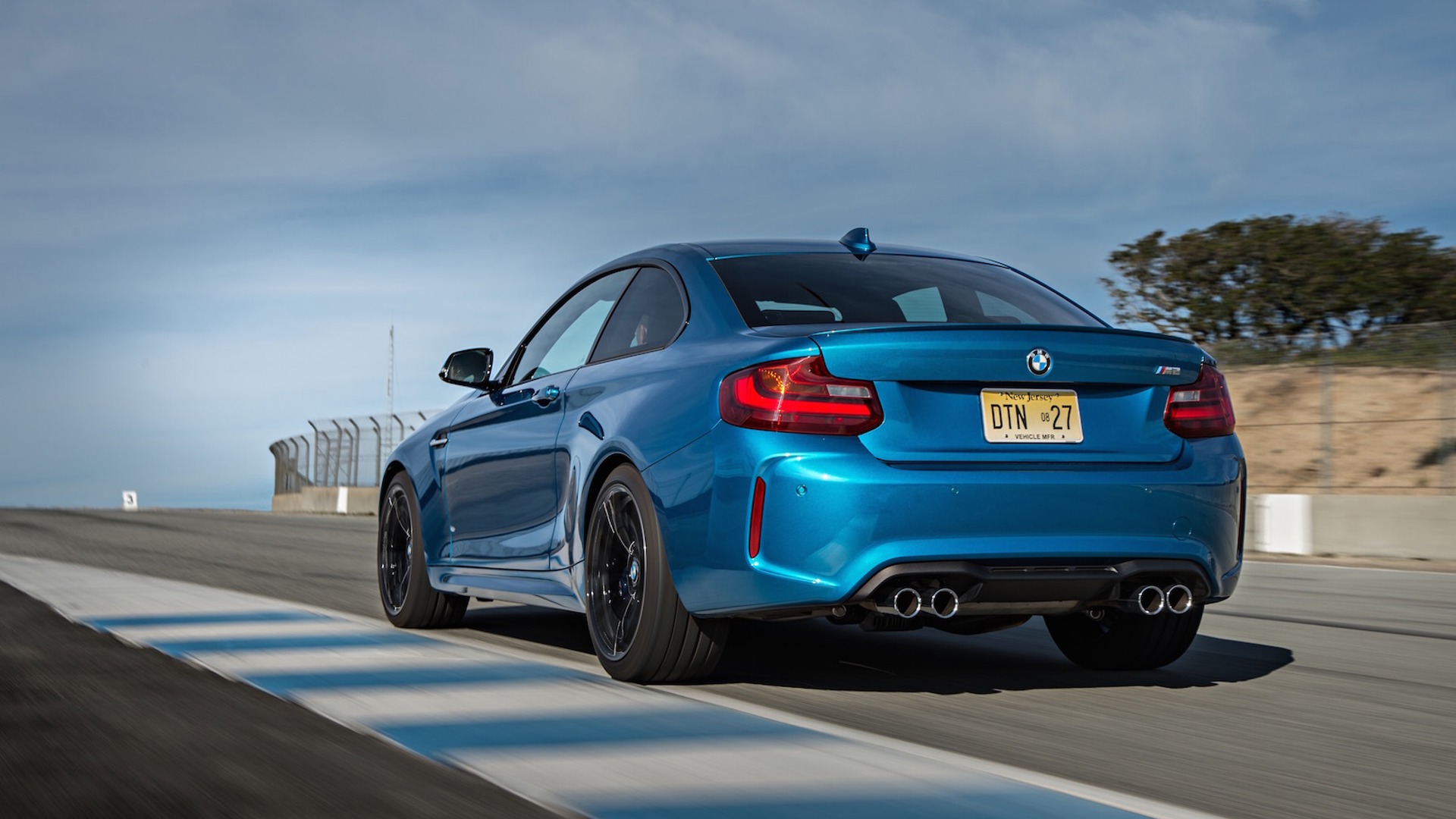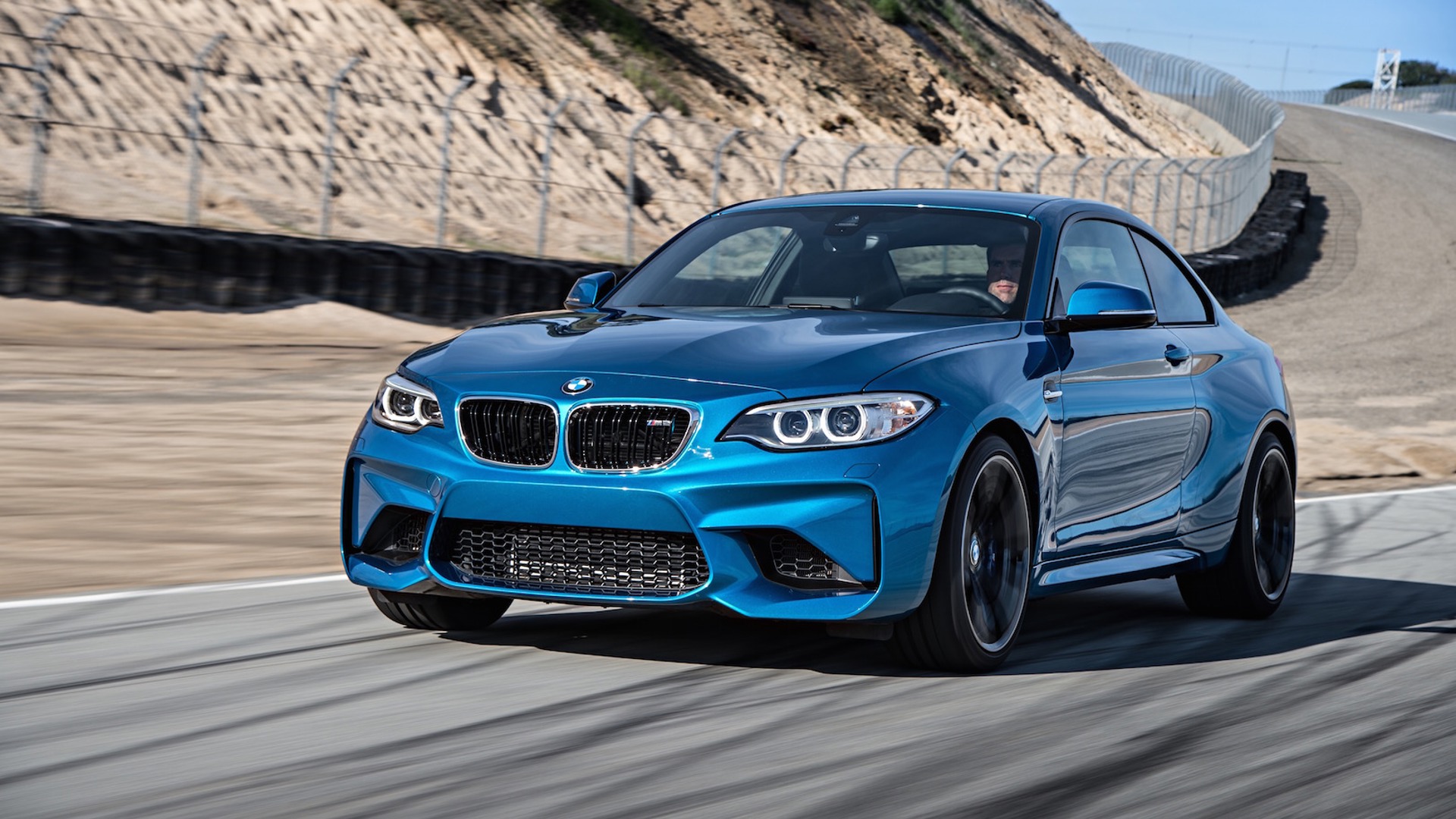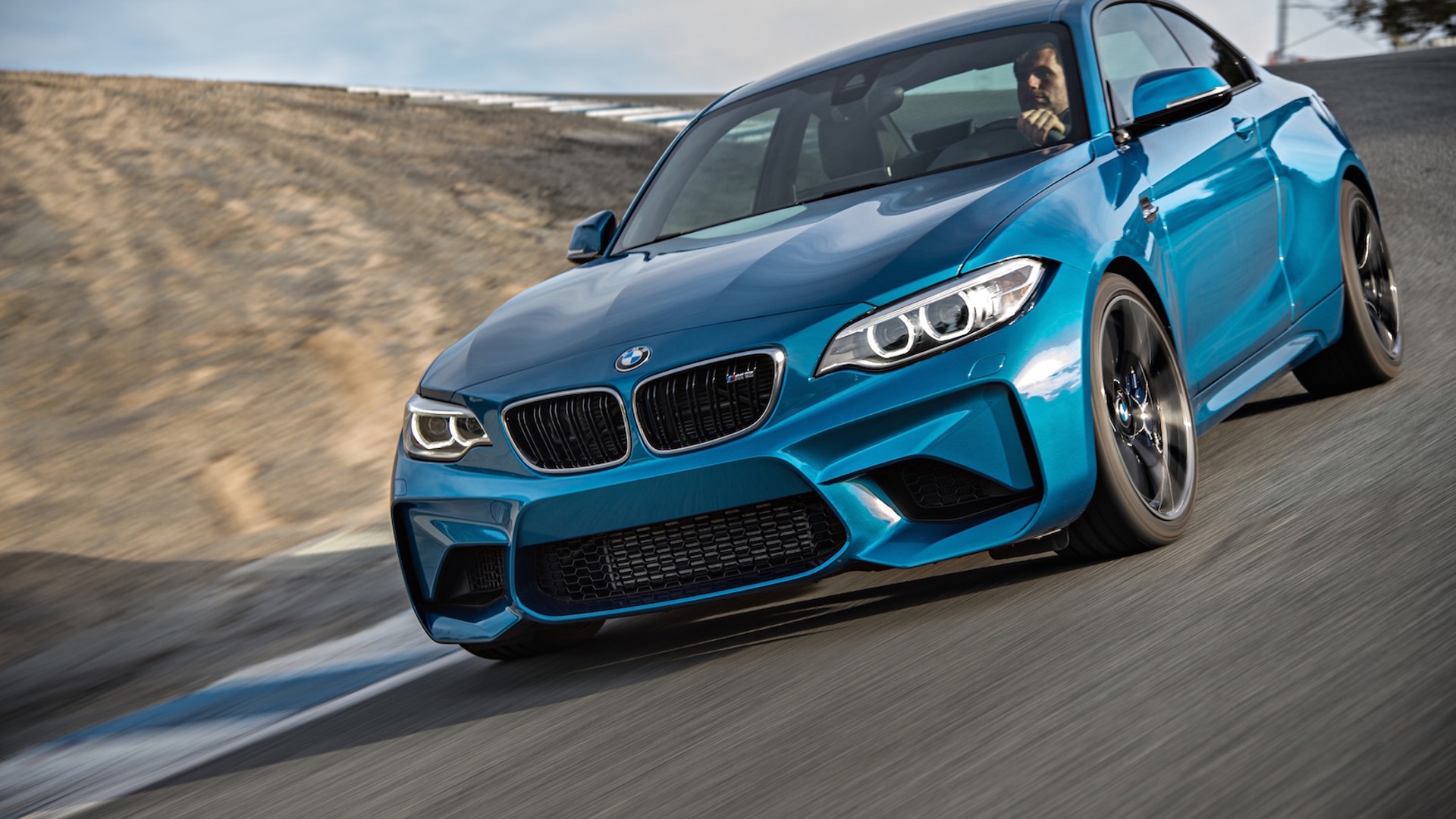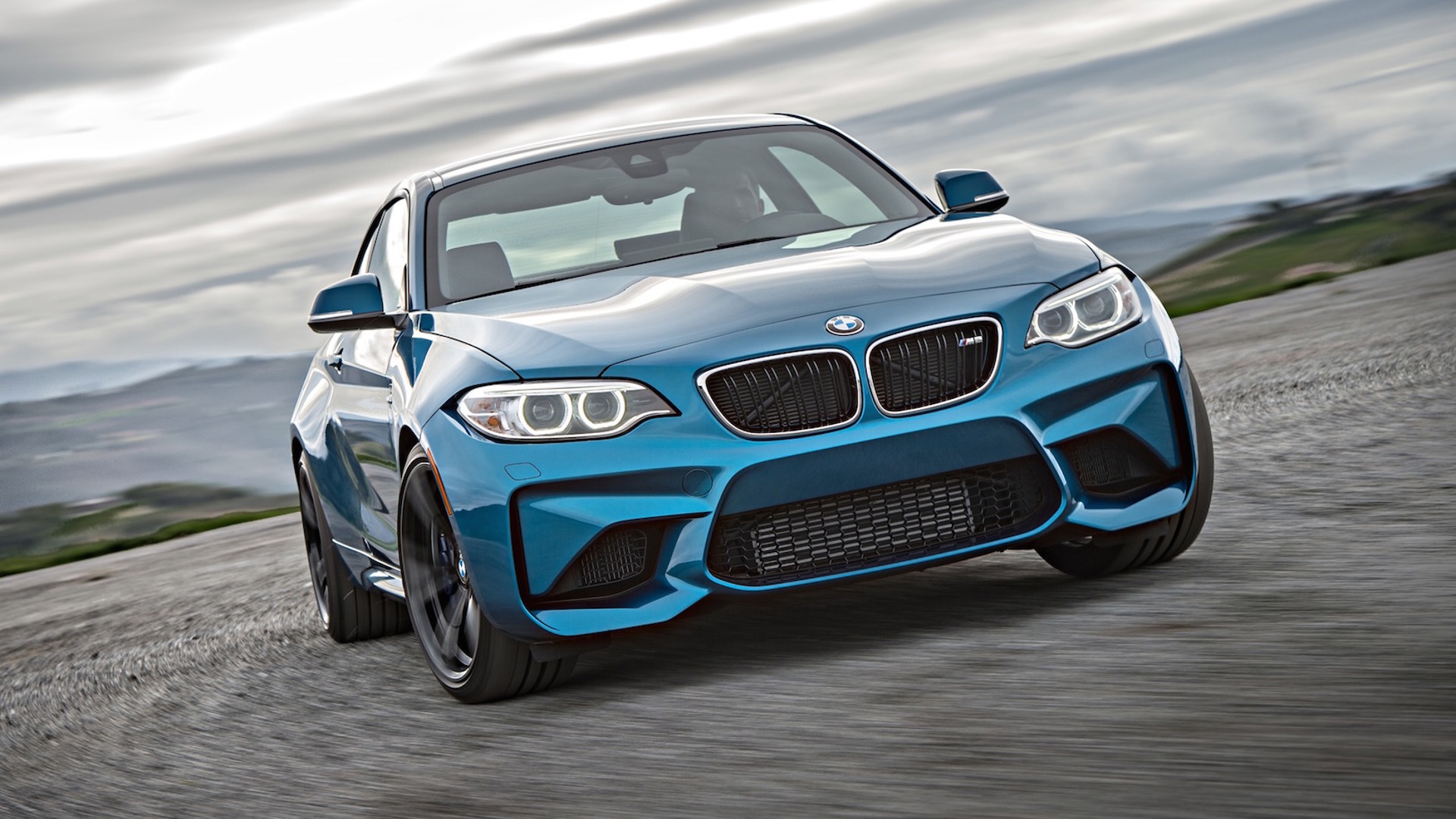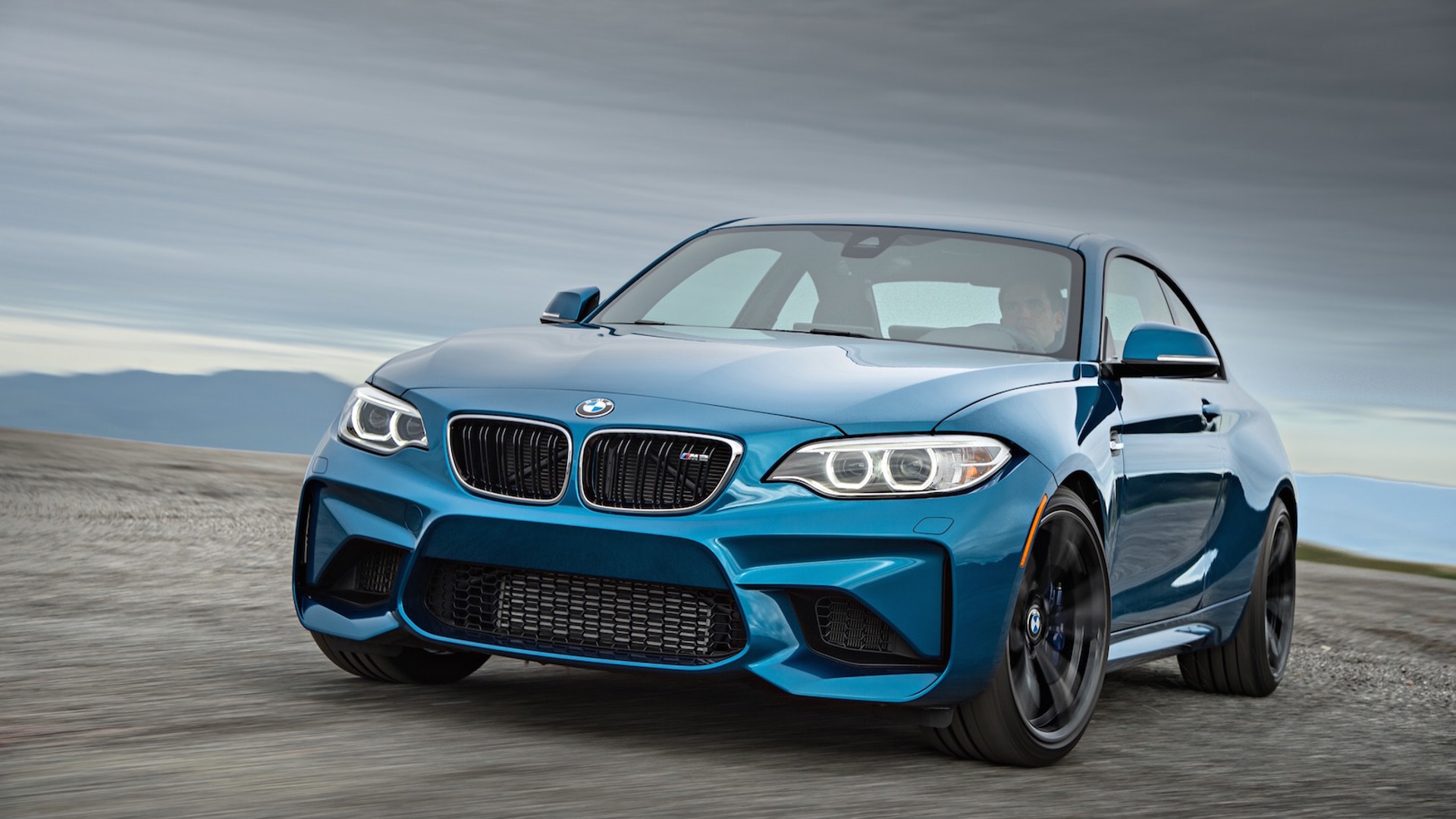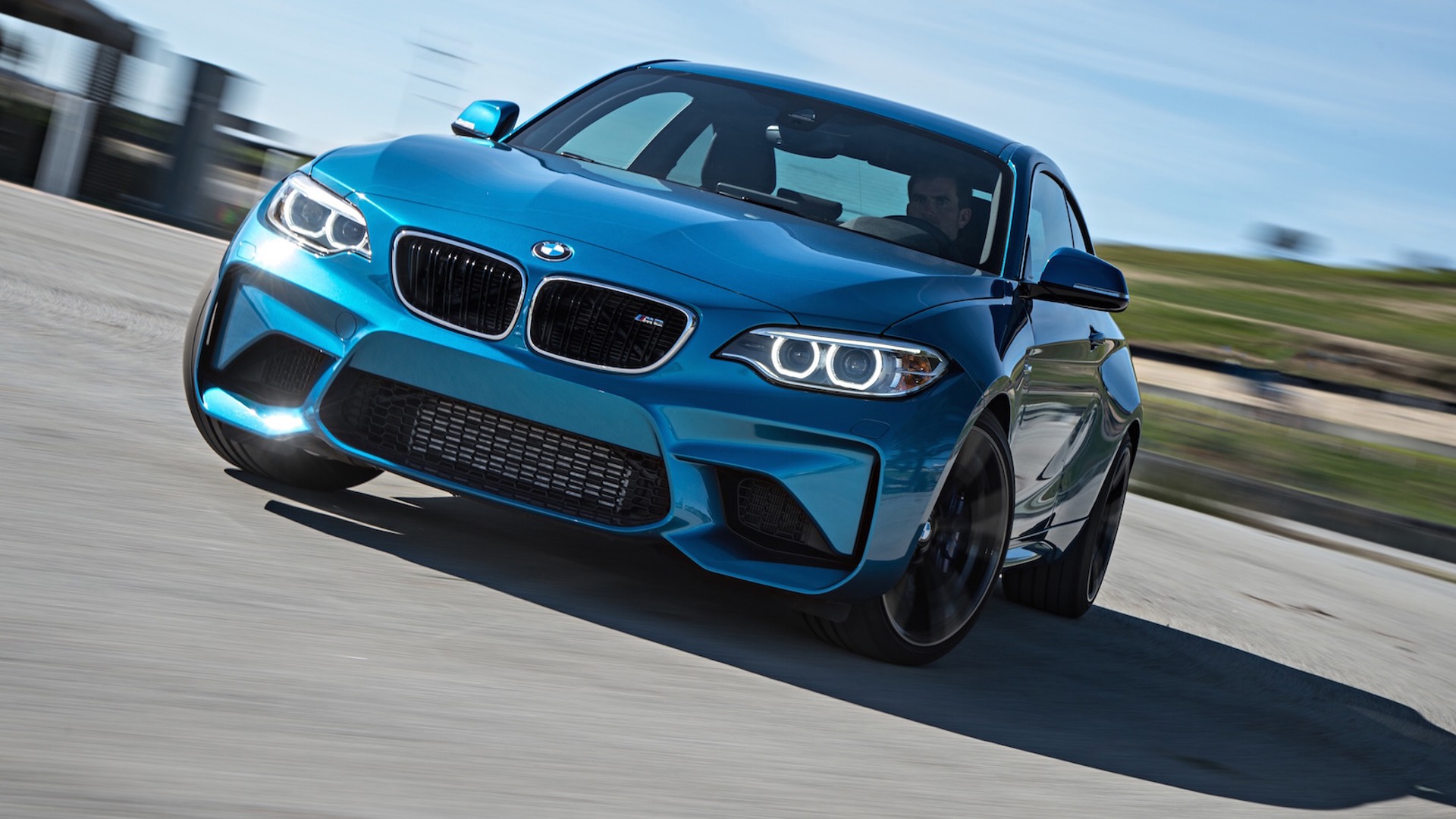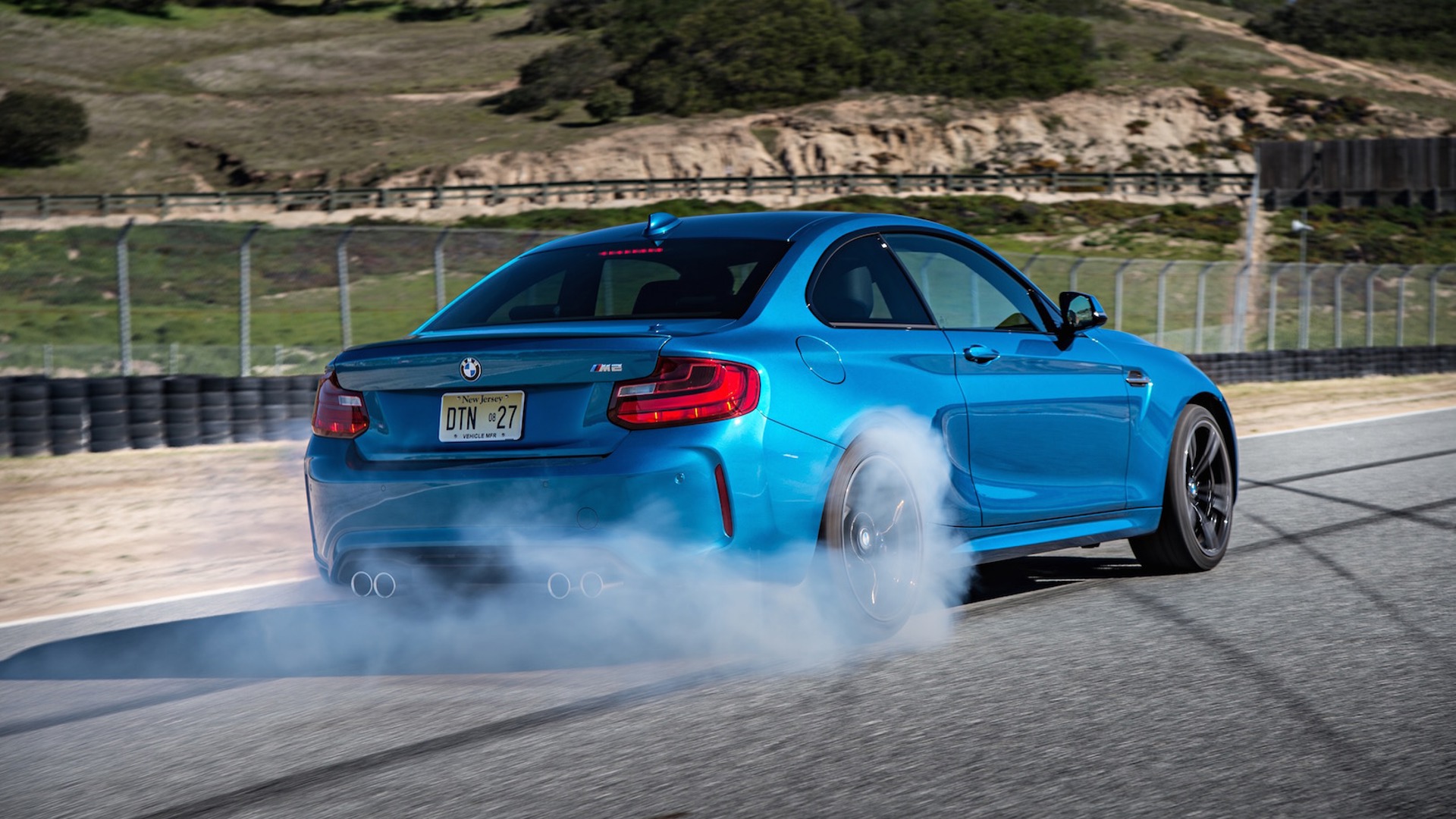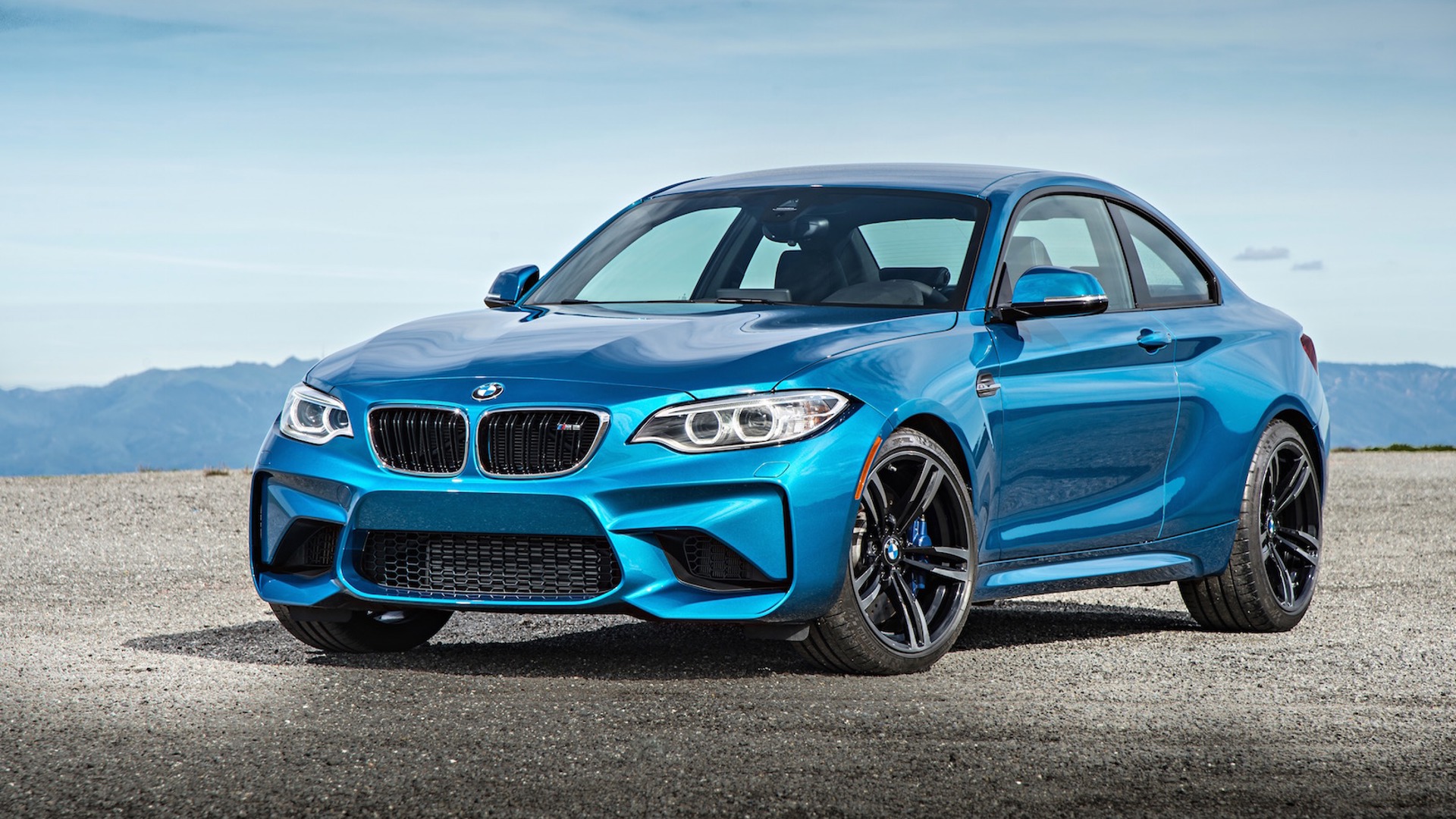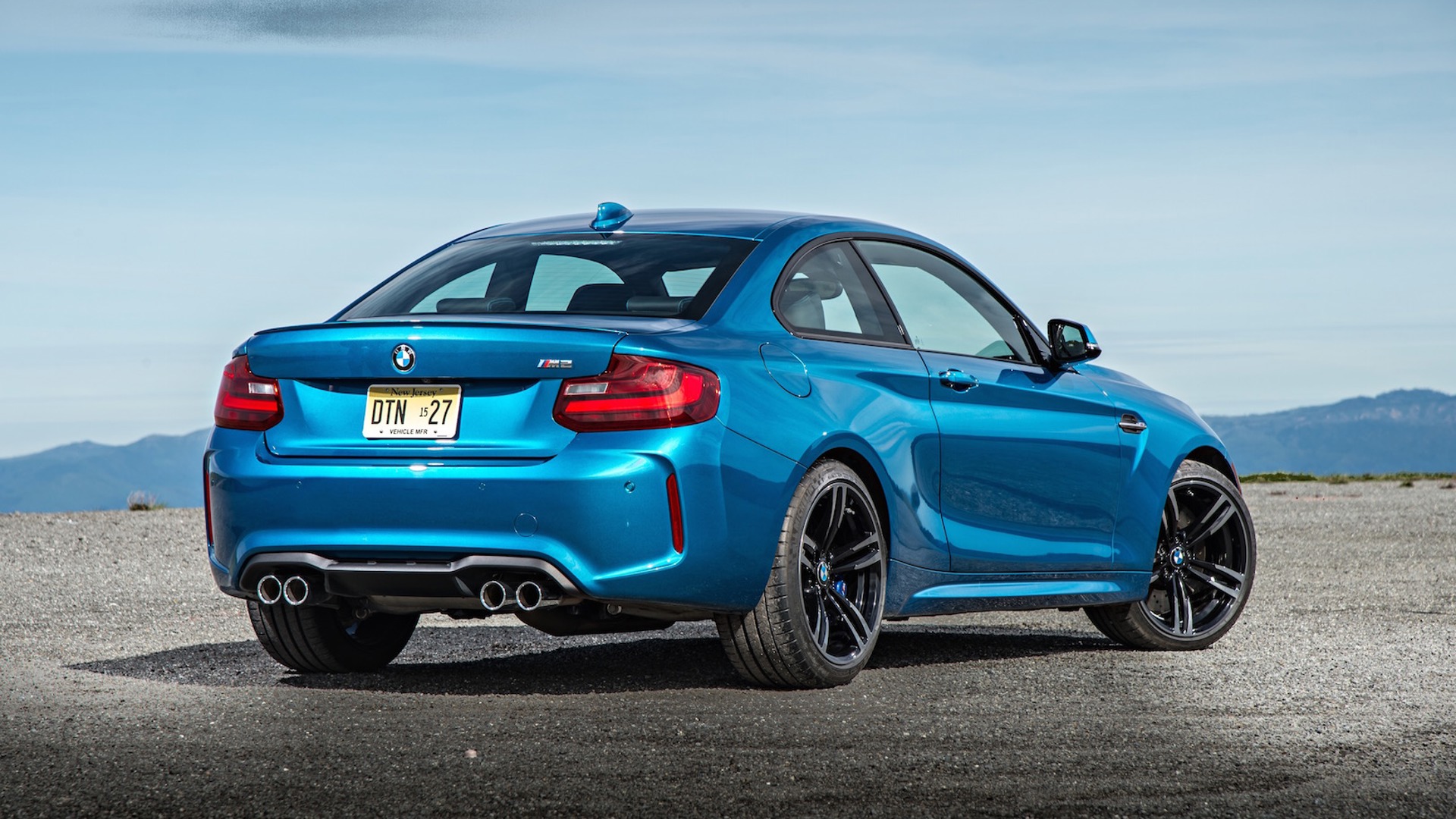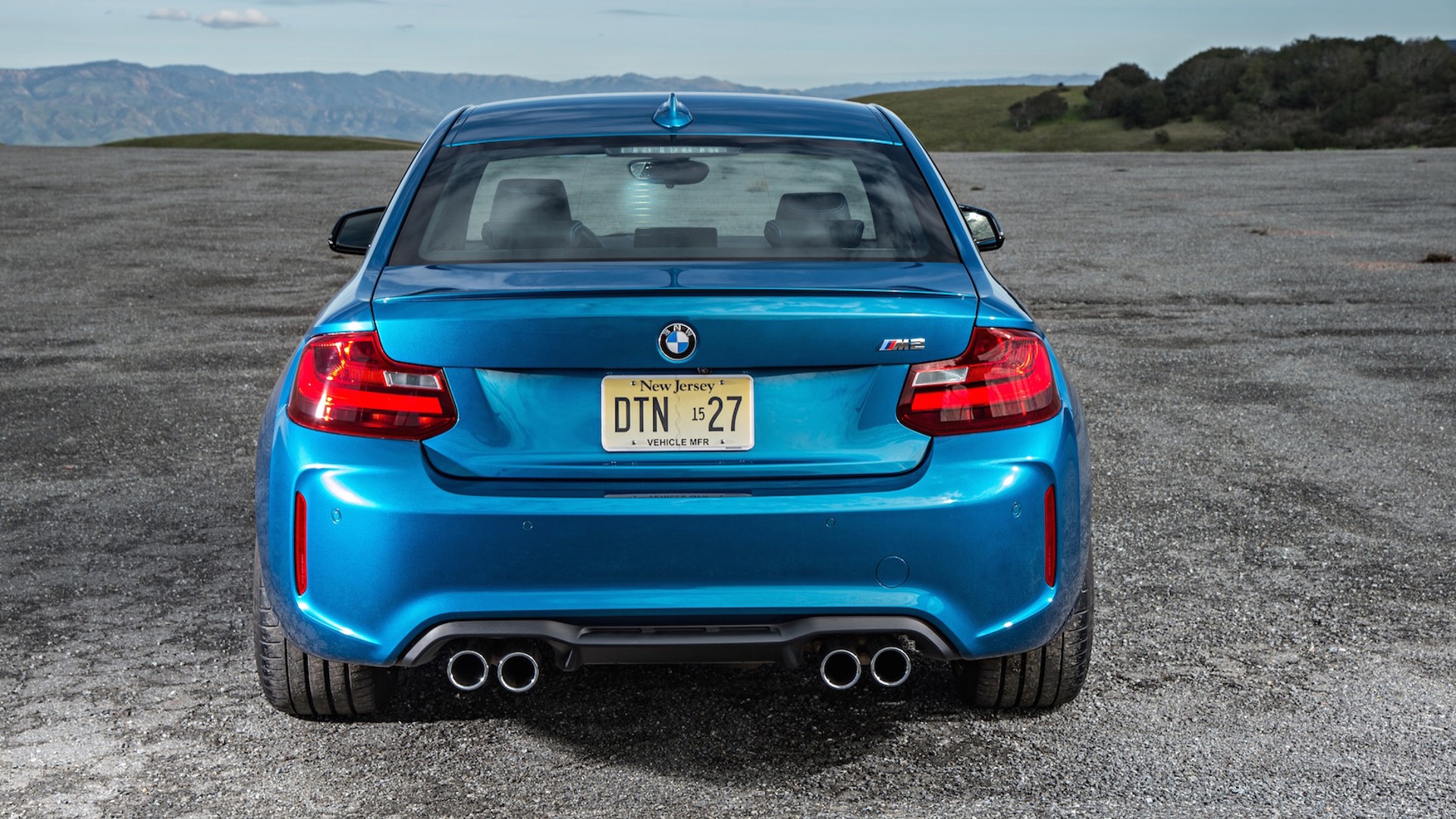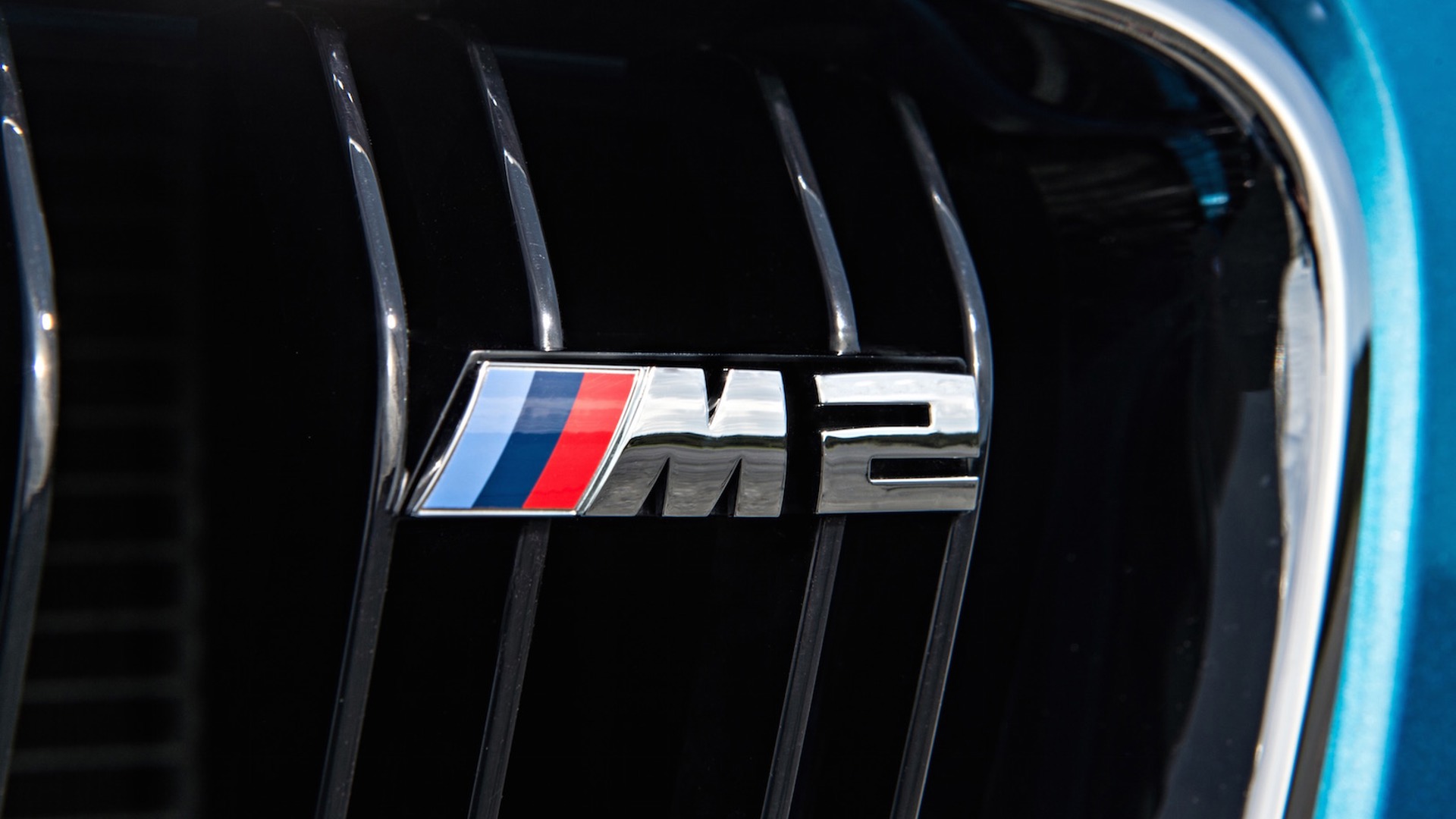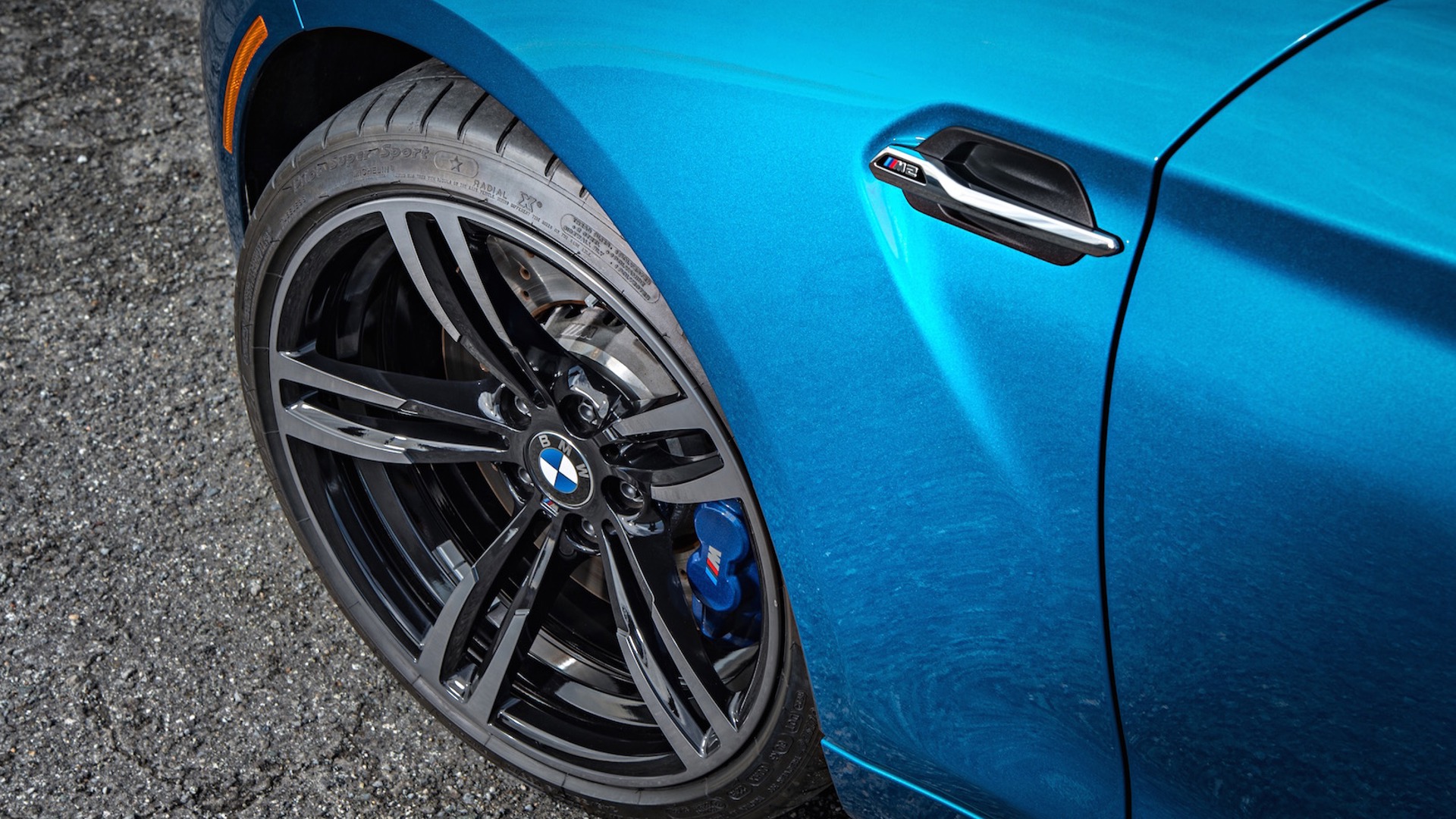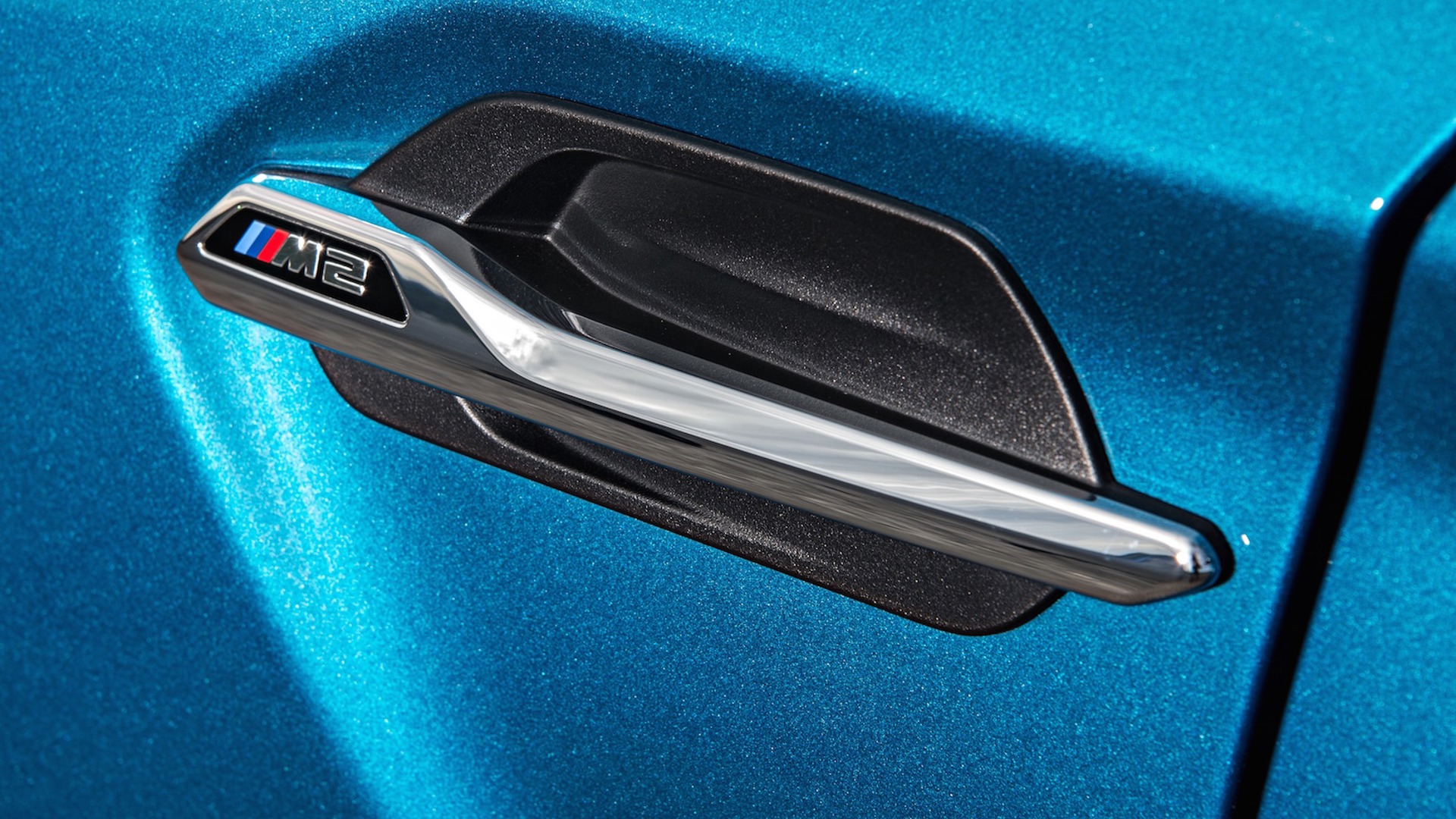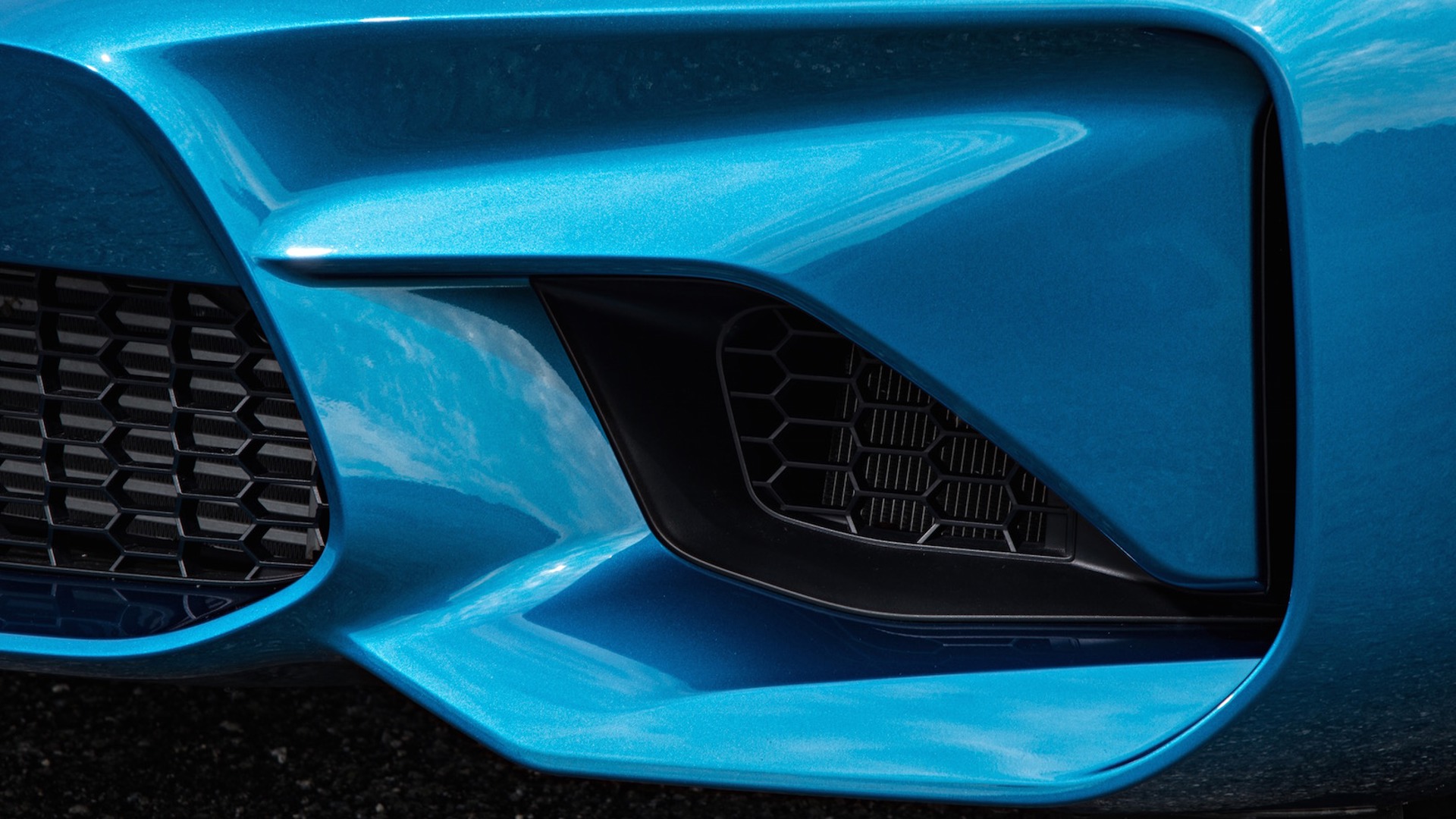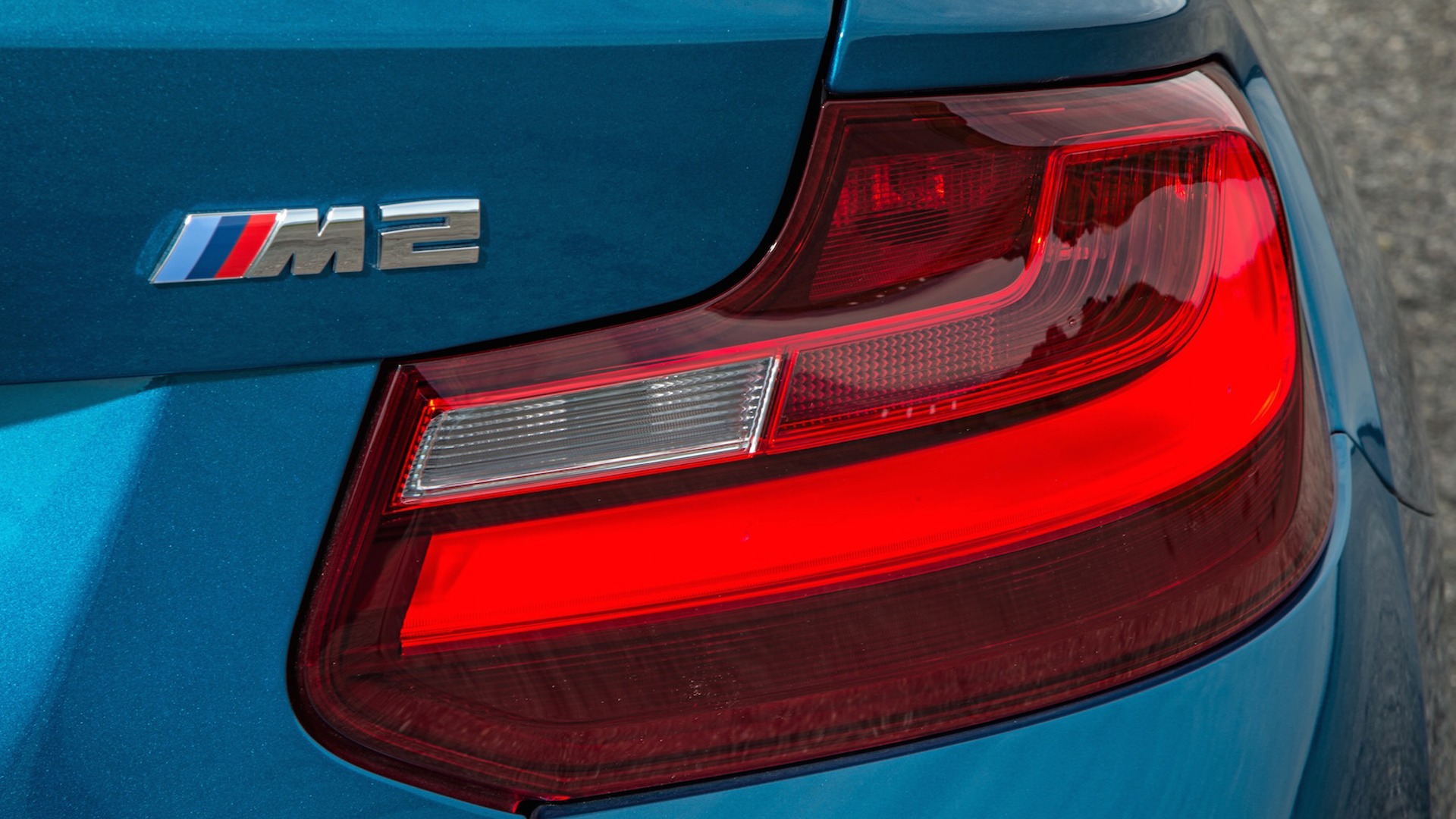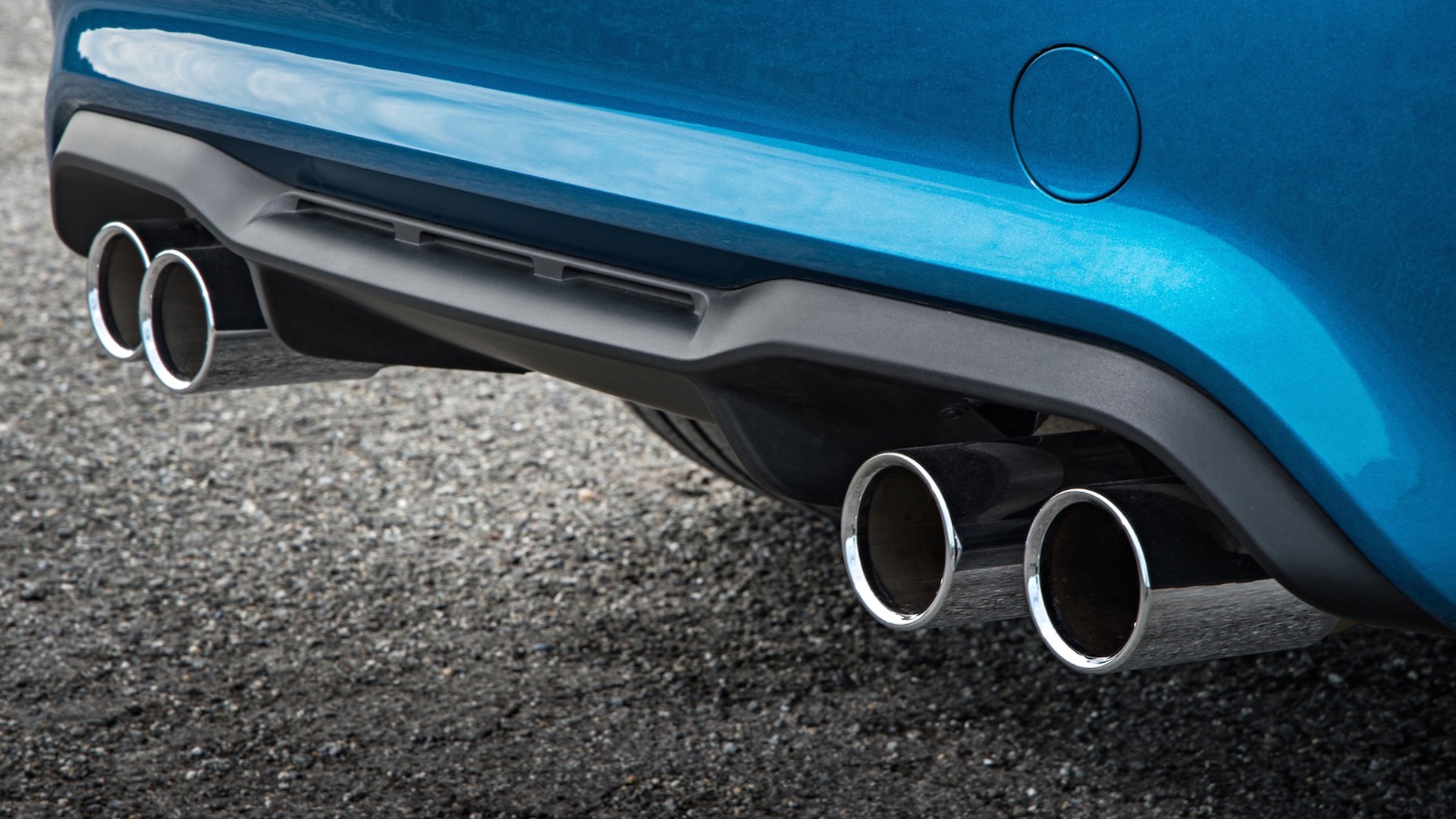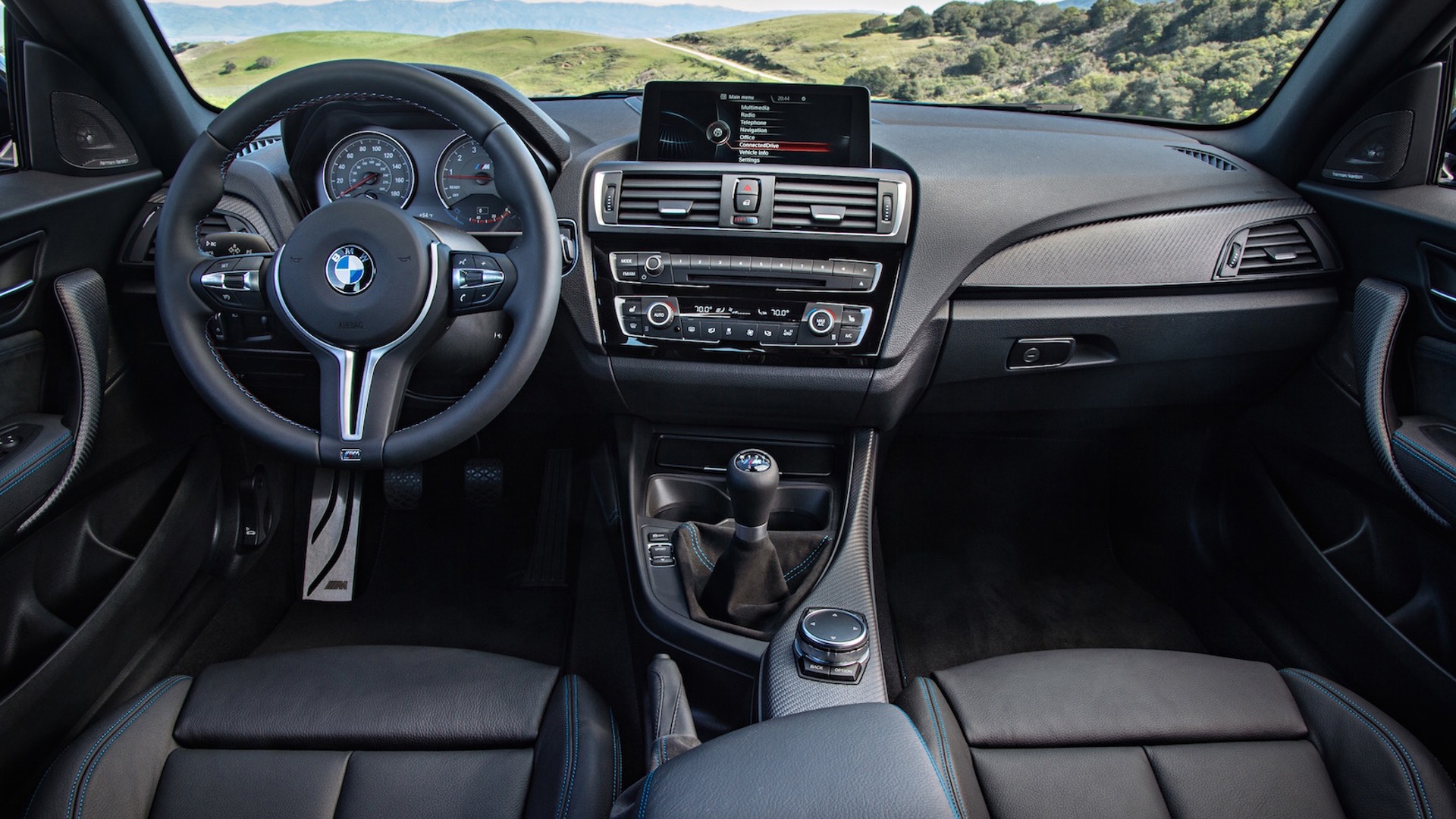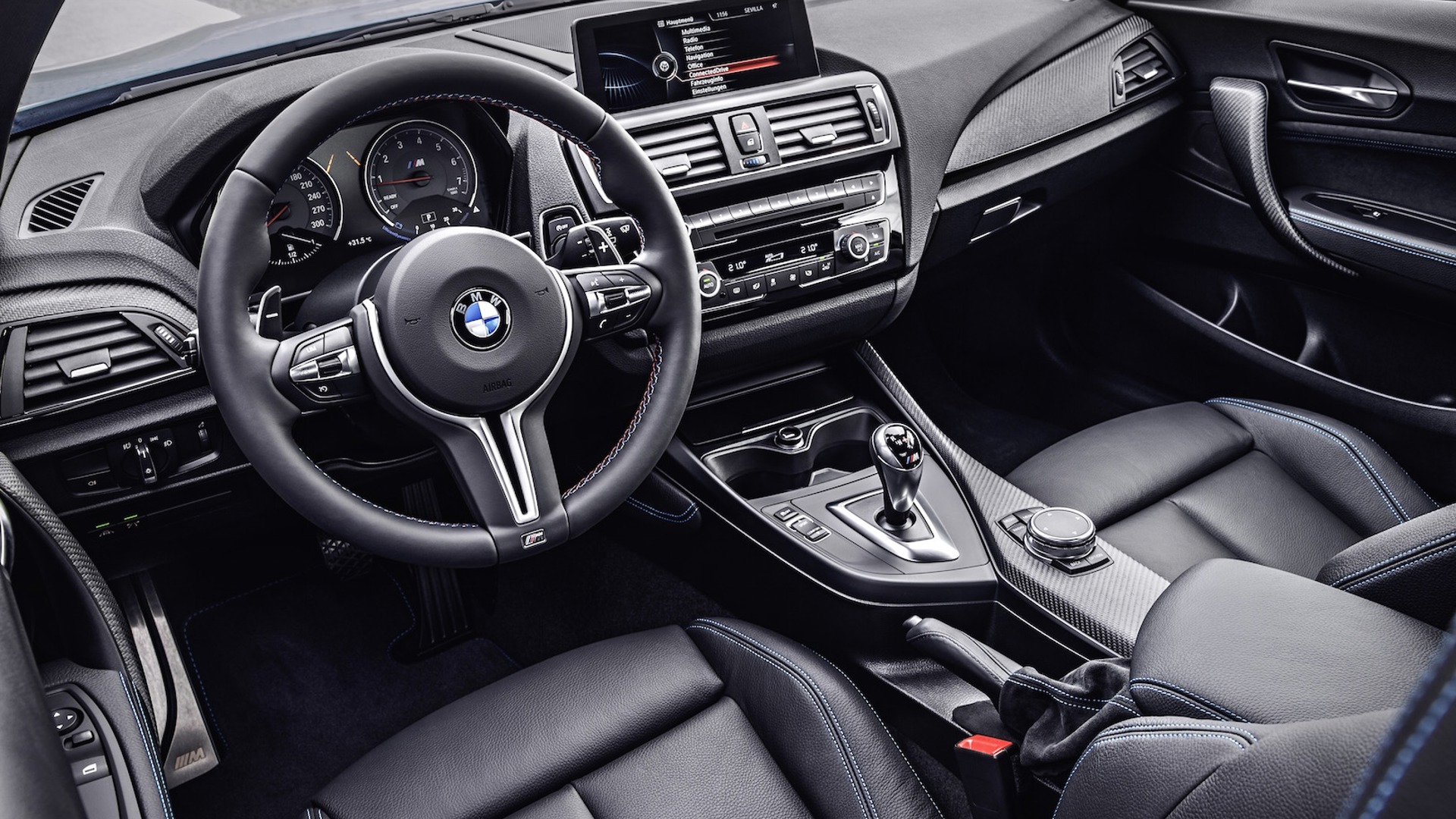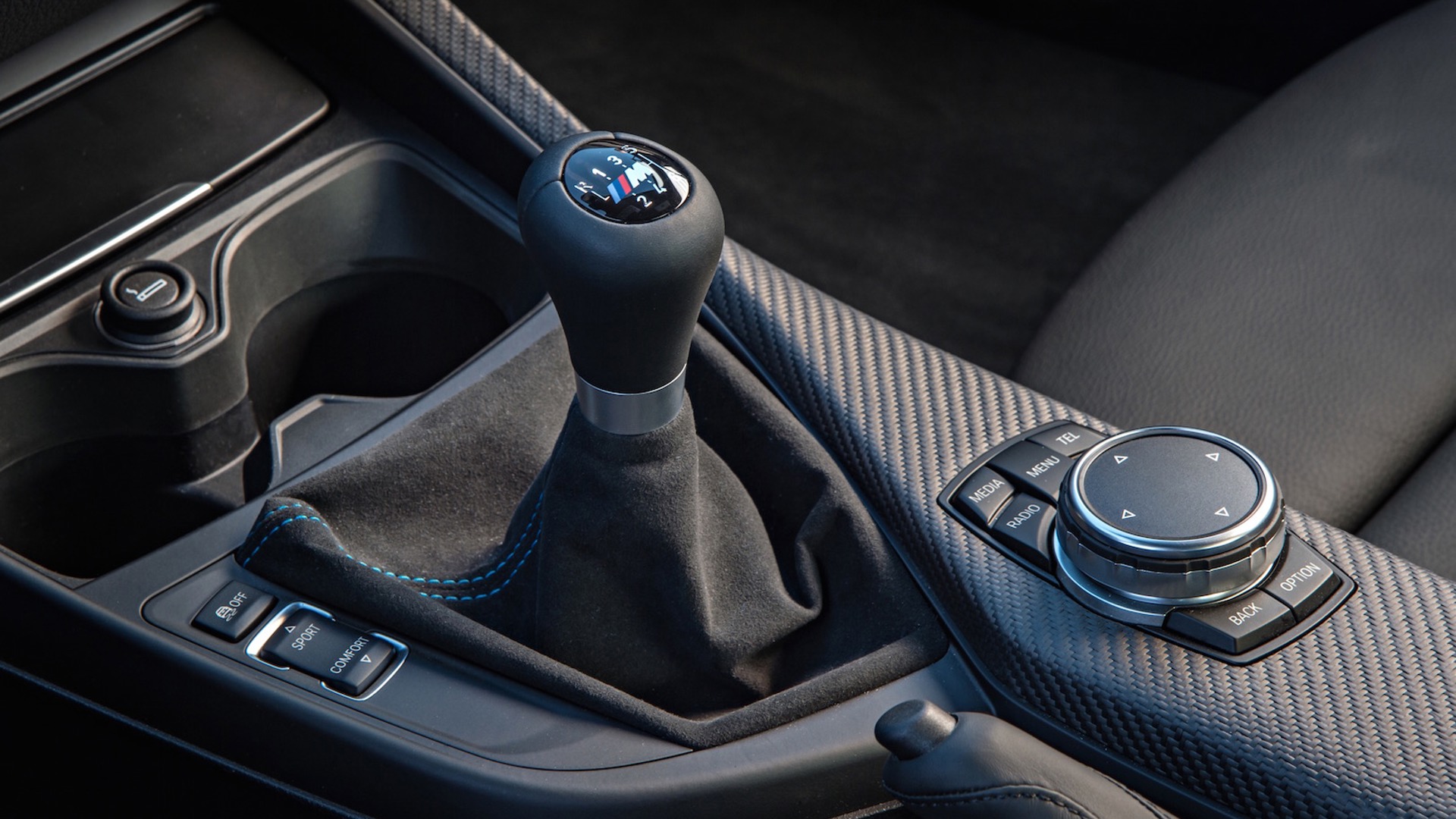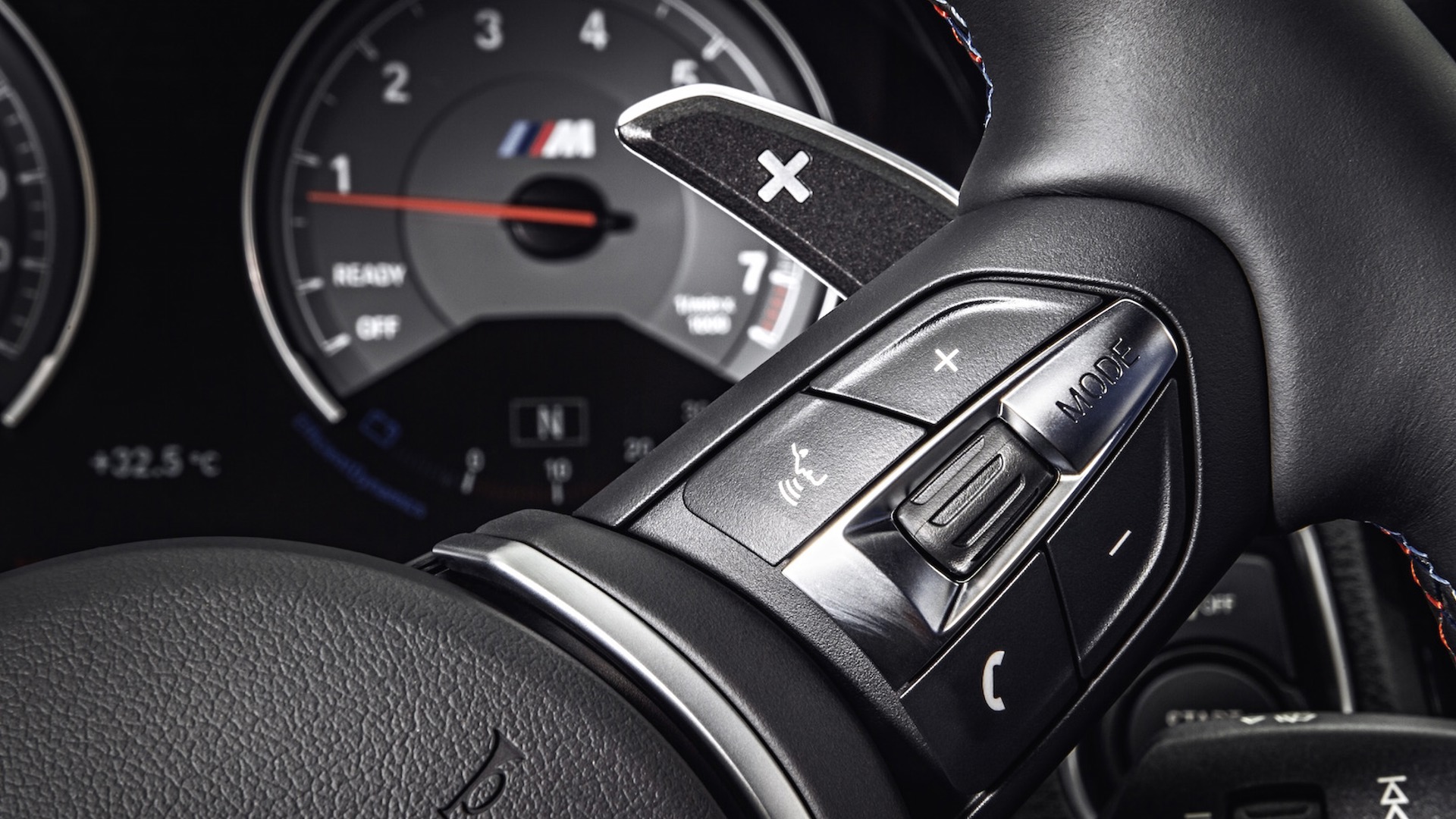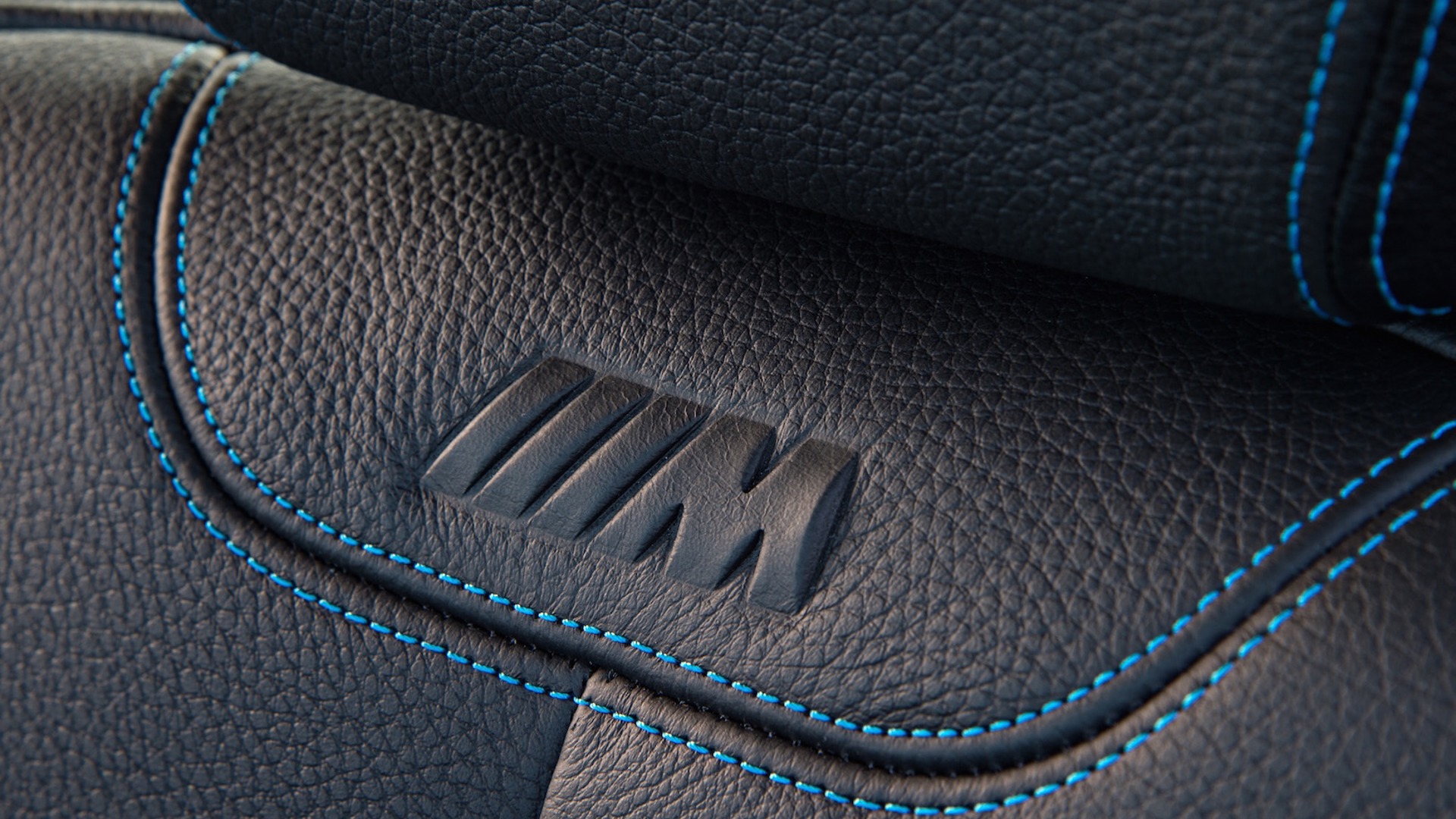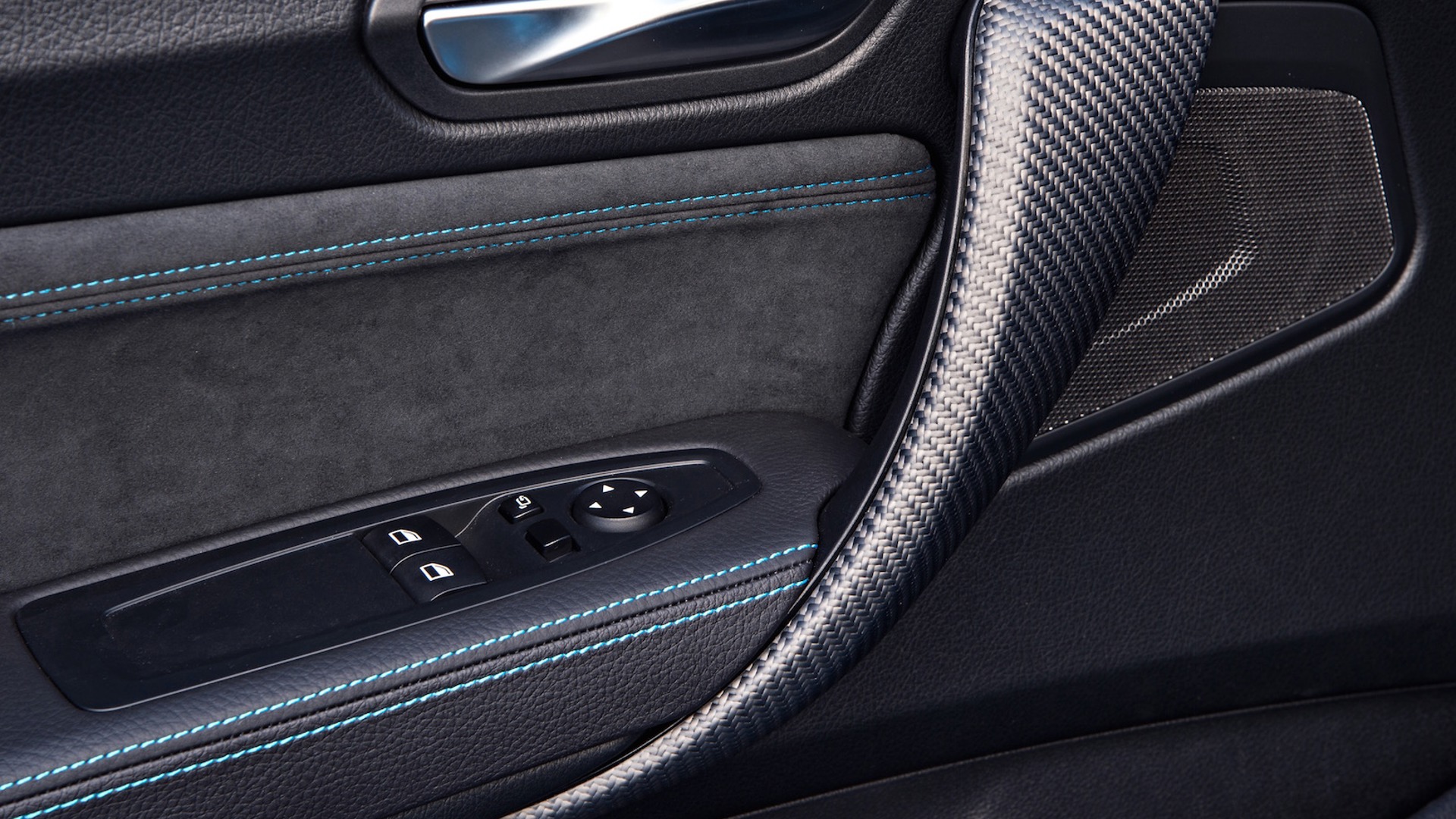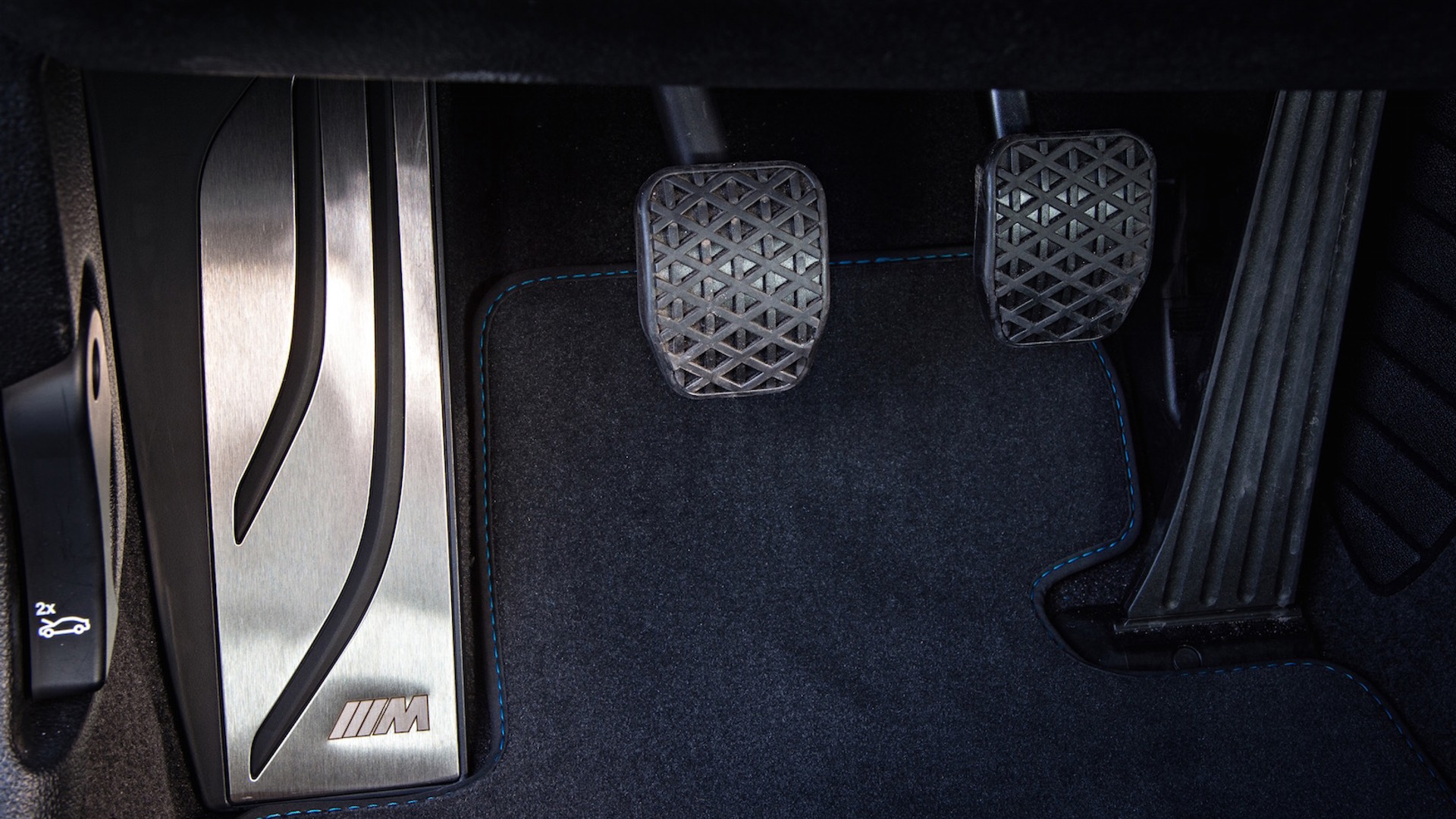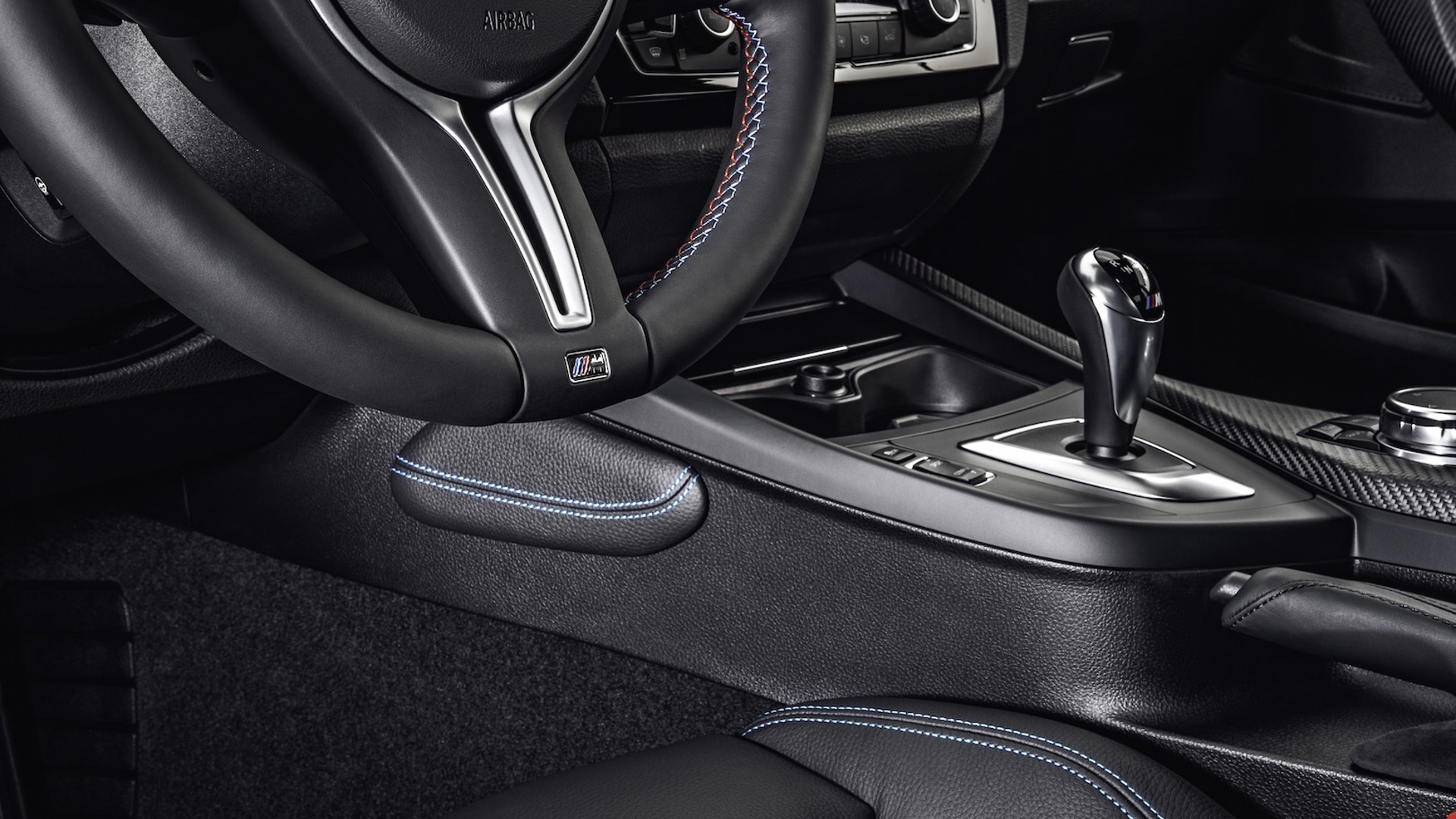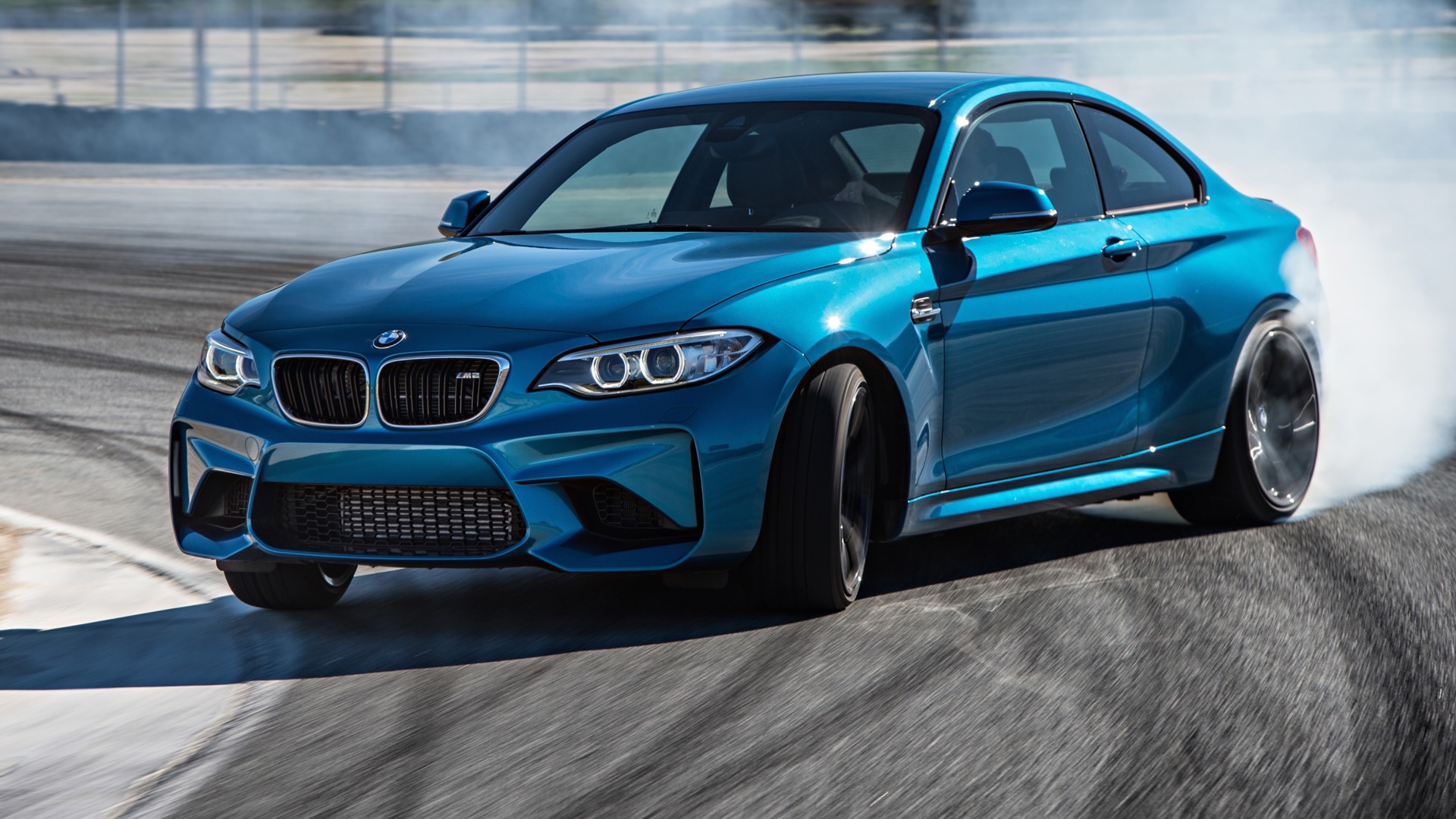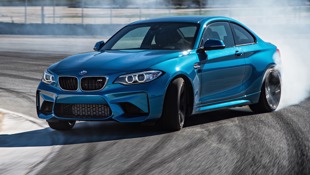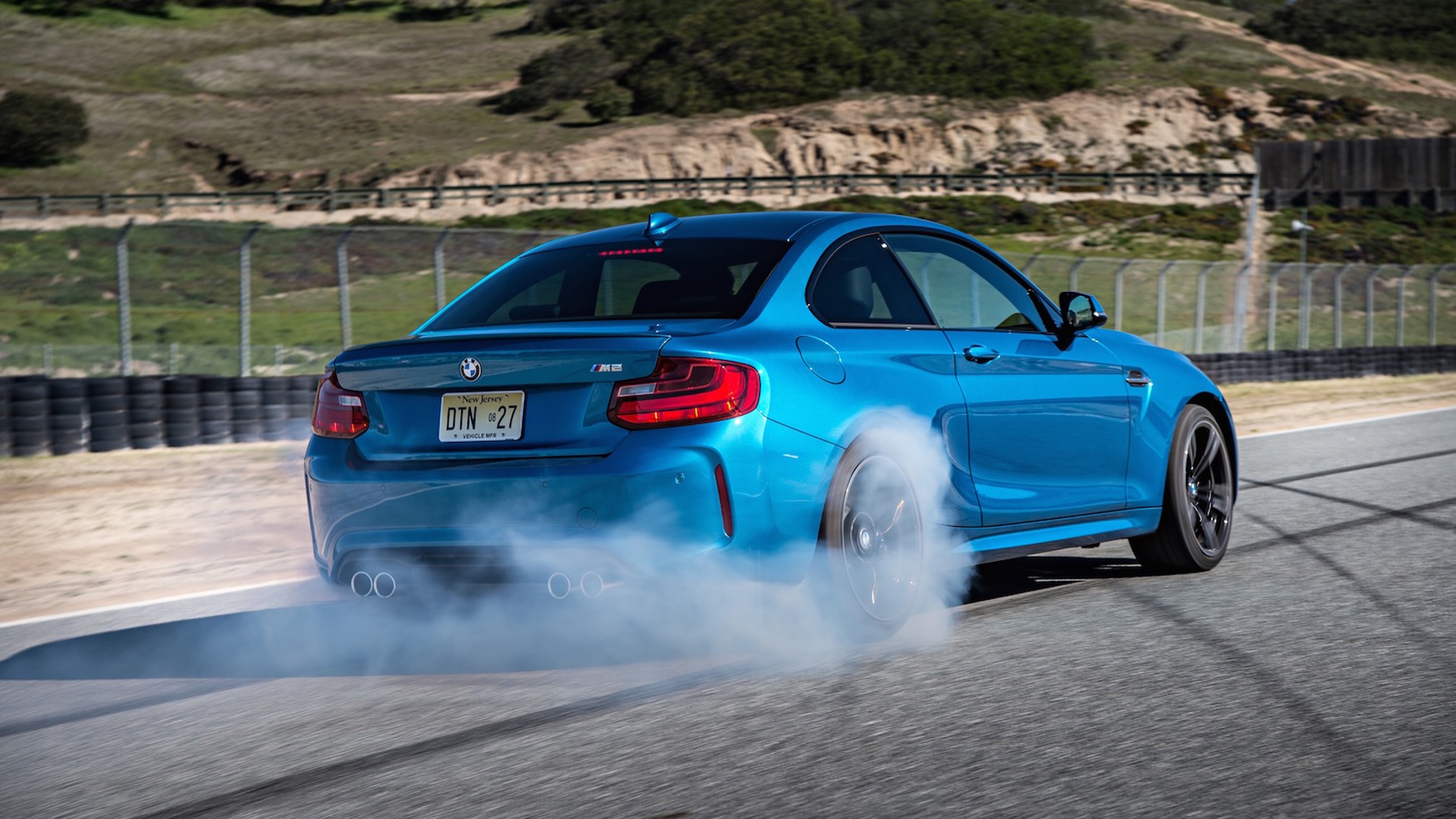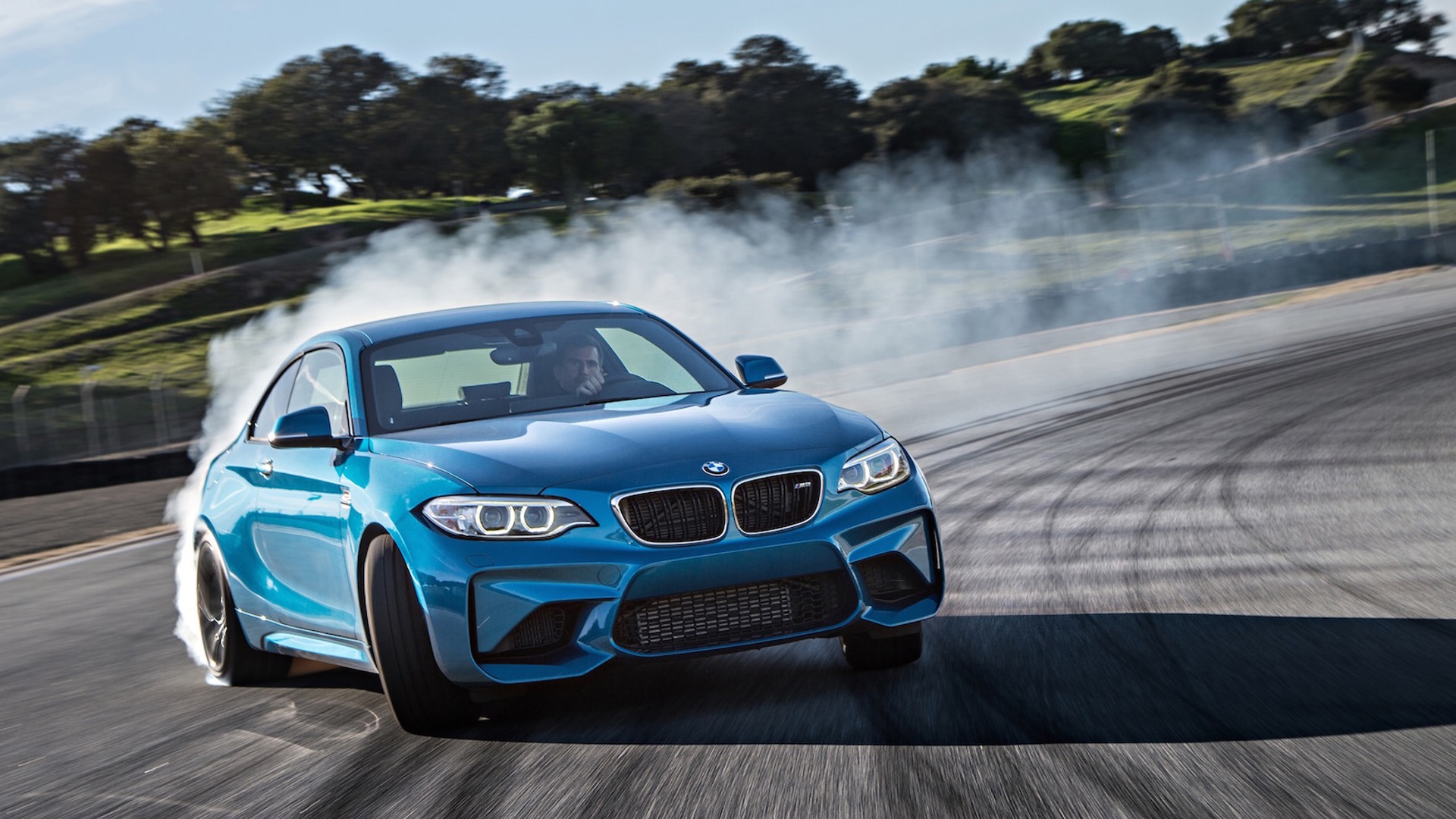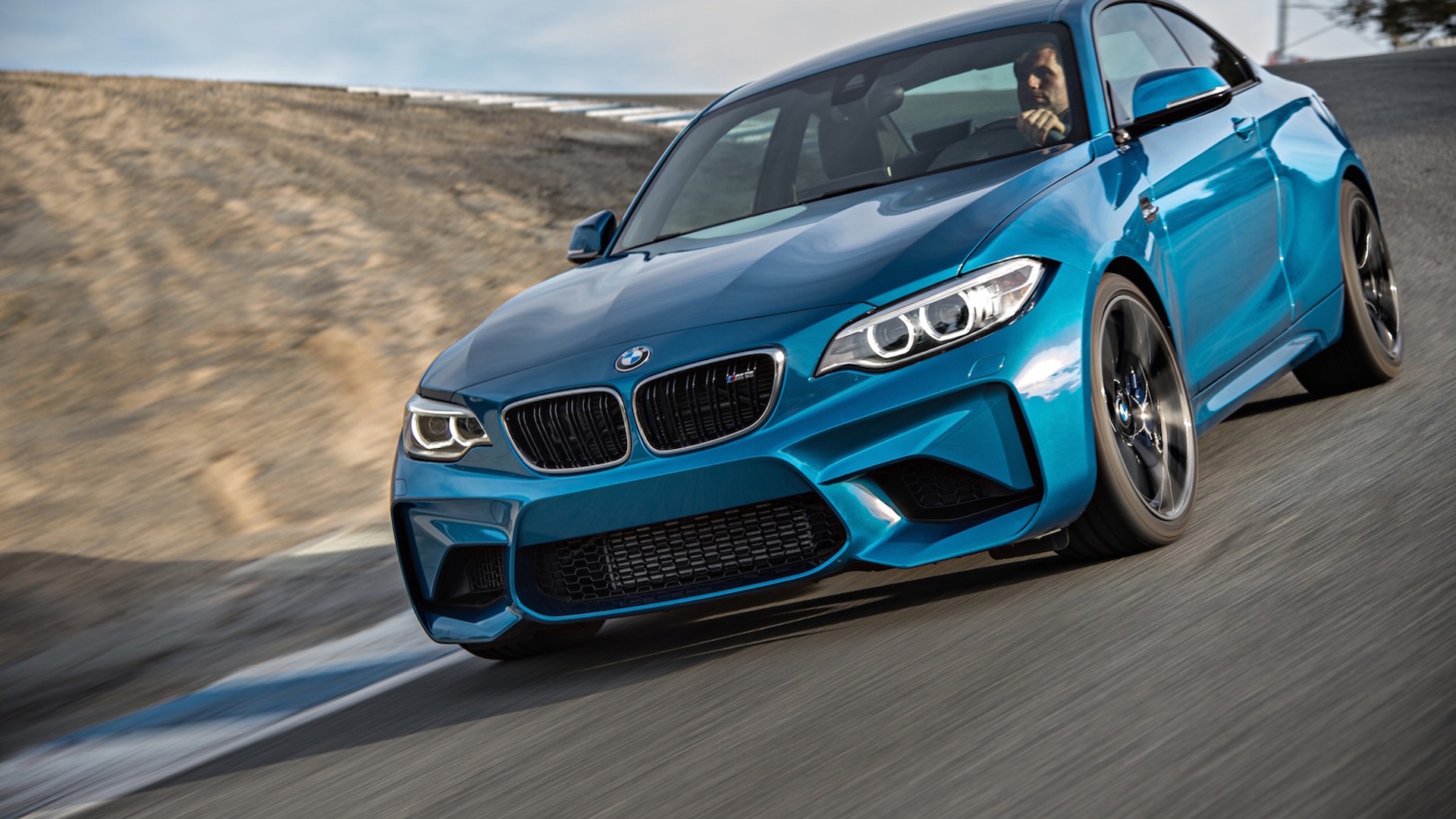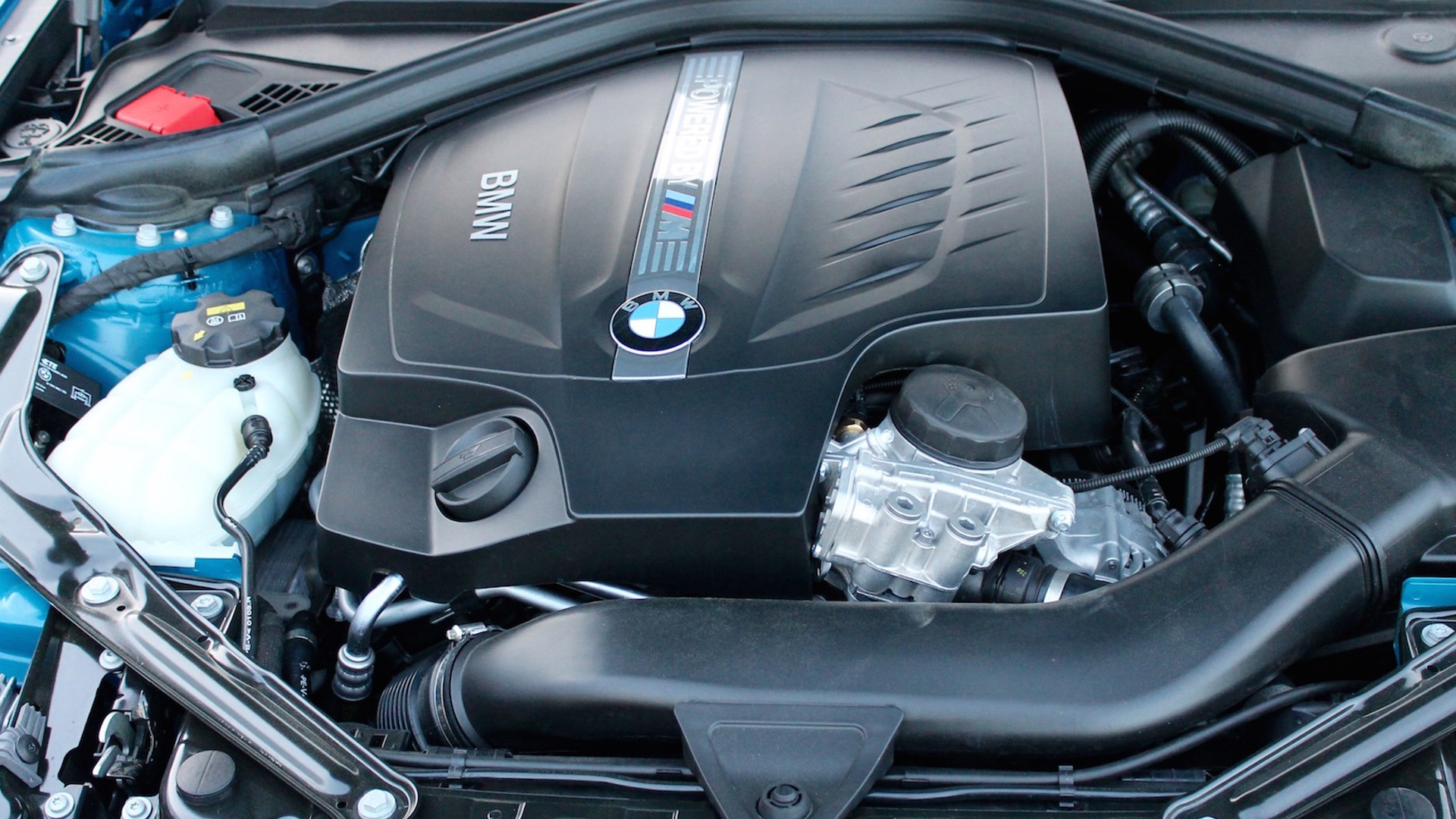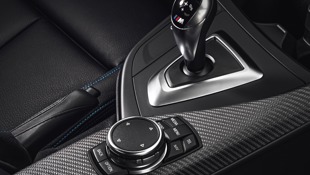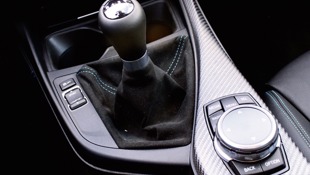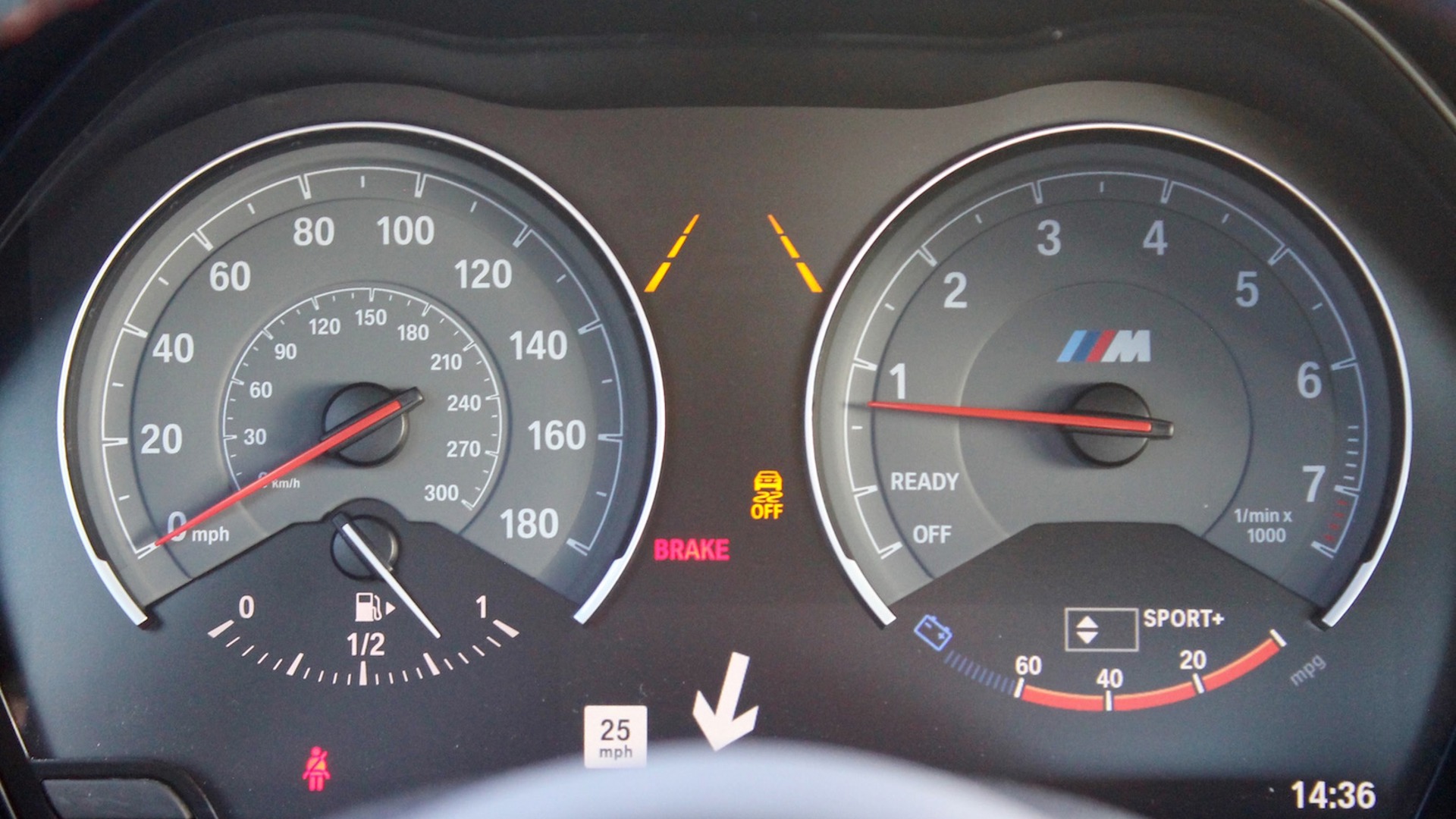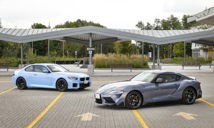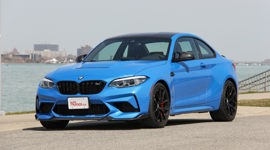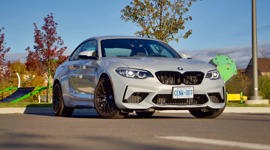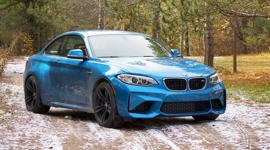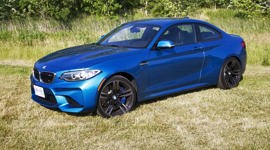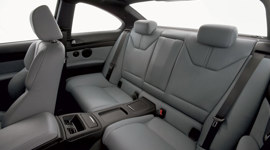MONTEREY, CA. – There’s only one real option available for the new M2: the gearbox. Do you want the six-speed manual for $61,000, or will you spend an extra $3,900 for the seven-speed automatic double-clutch transmission?
It’s a tough choice. The stick-shift is a lovely set-up, not too short but very precise, snicking through the double-H like a mouse in a maze that knows exactly where to find the reward. Save the manuals!
Except the DCT is easier and just that little bit quicker. Zero-to-100 km/h takes a claimed 4.3 seconds on a good day with the DCT, but 4.5 seconds with the stick. If you’re going to take your M2 to the track, the automatic will be a little swifter and more forgiving as you blip up and down with the paddle shifters. Any fool can do it.
It’s a crime to own an M2 and not track it...
And there’s really no other reason to own an M2 than to go to the track, unless you’re a pretentious snob who just wants to be seen with the best there is, whether you know how to use it or not. “All mouth and trousers,” as the Brits say. It’s a crime to own an M2 and not track it, but you’ll be slower with the satisfying, old-school stick. Tough choice.
That’s it, though. Literally everything else comes as standard, except the optional metallic paint ($850) and “convenience telephony” for connecting more than one smartphone to the audio system ($600). All the carbon-fibre trim on the armrests and dash is stock. The blue contrast stitching, the M-embossed leather, the 19-inch five-spoke wheels – all standard.
You want a sunroof? Forget it – that would add too much weight and affect the structural rigidity. All-wheel drive? A convertible? No way! (Save the Rear Wheel Drives!) Those are compromises and this is supposed to be something pure, something to worship on the sports car altar.
“It’s something like a motorcycle with four wheels,” says Dirk Hacker, BMW’s vice-president of engineering for the M division. “You use it on weekends if you have some spare time, if you want to have fun. You can also do this with the M3 or M4, but I think the M2 is more focused on this kind of driving – to use it for a track day or something like that.
“The M3 or M4 is more sophisticated with a wider possibility of use. The M2 is a pure, focused car.”
There are plenty of M3 and M4 parts on the M2, including the suspension, front axle, whole rear axle, the differential and rear gearbox, and the complete brake system. It’s all been massaged onto a modified 2 Series chassis with a wheelbase that’s 120 mm shorter than its siblings.
The 3.0L inline-six engine shares a bunch of components too, including the pistons and crankshaft main bearing shells, but it’s otherwise significantly upgraded from the 2 Series. The twinscroll turbocharger is integrated into the exhaust manifold, helping it find 343 lb-ft of torque, which bumps to 369 lb-ft on turboboost.
Most important, like other modern BMWs, it finds that maximum torque across a wide range of power, from 1,400 rpm up to 5,560 rpm. (The overboost maximum torque is a little narrower, from 1,450 rpm to 4,750 rpm, but who really notices when you’re bouncing off the 7,000 rpm redline pulling out of Turn Five?) As BMW is quick to point out, that’s 70 lb-ft more than the old M3.
The President of BMW’s M Division tried to put this into English words. “It’s so nimble, so direct, so easy to drive,” said Frank Van Meel, standing beside the track here at Laguna Seca. He searched in German for a better descriptor and looked pained as his second language came up short. “It’s not heavy, it’s … it’s…”
A translator stepped in and offered a word suggested earlier by an Australian, which had to be explained, but Van Meel looked happy at its prospect. “Yes, that’s it!” he cooed. “Chuckable! It’s definitely chuckable. You can chuck it into the corners, all day long.”
Which I did here, lap after lap after lap.
I never did have the opportunity to drive its predecessor on a track. The 1 Series M Coupe sold only for a year back in 2011/’12 and was greatly loved, hailed as a near-perfect track car. It was okay on the street, though I remember it as cramped and so stiff it nearly shook out my fillings. Fans have waited for a worthy successor ever since.
The M2 is not cramped. It is a stiff ride, even when its Drive Mode is dialed down from Sport Plus or Sport to Comfort, and that’s due to the firm suspension and additional stiffening plates, all made from aluminum. The lightweight steel rear axle sub-frame is fixed directly to the body without using the usual rubber bushings, which apparently improves wheel location and tracking ability. I’m sure it’s true – the car went pretty much wherever I expected it to go.
The electric power steering, which is one of the most essential factors for any performance drive and formerly a bug-bear in its development, is truly satisfying. It’s firm but not stiff, and easy to work without being light. It adjusts with speed, though you never really notice.
One of the original parameters was the M2 had to not only be rear-wheel drive but also feel like it was being pushed from the rear. The back tires are slightly wider, with 265/35 ZR 19s at the rear and 245/35 ZR 19s at the front. Michelin developed special tires to be fitted as stock, and they gripped the track well here at Laguna Seca.
It’s all about power-to-weight distribution for ideal balance with any M car, but it’s also about clever electronics. In Sport Plus, most of the nannies were turned off but the Active M Differential keeps on monitoring everything. When the car’s at the ragged edge, the computer is calm as a German cucumber, checking through the Dynamic Stability Control system to figure out what’s happening with the car’s steering angle, brake pressure, throttle position, engine torque, wheel speed and yaw rate. If something’s amiss for whatever reason, it works within 150 milliseconds to dab or even lock the individual brakes to prevent either drive wheel from slipping.
It even uses all that information to predict when one wheel might slip more, to even everything out and keep the two drive wheels spinning at better matched speeds around the twists and turns.
In this way, the M2 showed neither oversteer or understeer in any of the corners, though there was plenty of tortured squeal from the tires and, after a while, howls from the brakes. Those are 15-inch rotors at the front and 14.5-inchers at the back. They didn’t seem to fade at all, though I cooled things down every three laps.
The car probably didn’t need this, and it went all day with other drivers hopping behind the wheel. It has an extra water cooler for the engine and an additional cooler for the transmission, as well as a modified oil sump with an extra suction pump. This makes sure the oil supply is consistent even when the engine is chucked left and right and back and forth.
All this was very effective, but not too flash. If you want a bit more slip and slide, the “M Dynamic Mode” can be set to allow more oversteer, which means you can drift as much as you want. Unfortunately, after showing a video filled with M2s smoking up the asphalt, BMW imposed a “No Drifting” rule intended to save the Michelins. Shame.
I drove the automatic DCT on the track but switched to the stick shift for a gentle pootle down the Pacific Coast Highway, to drive in some real world conditions – well, “real world” for California, anyway.
After the sacrifices of the old 1 Series M Coupe, the M2 proved itself a comfortable vehicle. This is no stripped-down CSL but a fully-featured premium coupe, with an impressive sound system and full connectivity.
Yeah, yeah – you don’t really expect anything less these days from a $61,000 BMW. In any case, the most impressive sound was from the exhaust, which roared a little more mightily with the Drive Mode switched back up to Sport. Why an M driver would ever willingly switch the mode to Comfort is beyond me, though I guess the passenger might ask for it. Any passengers in the rear certainly will. Headroom back there was cramped for my six-foot frame, but leg room wasn’t too bad if the front seats were pushed forward. Who cares about anyone back there, though? They should be grateful they’re not walking.
The exhaust sounded especially impressive whenever I was downshifting because the computer matches the revs to give a little blip in rpm. Upshifts lower the revs automatically, just enough to be smooth and impress your passenger. You can turn this off if you want to, but why would you? Maybe once or twice when you’re alone, just to remind yourself of your limits as a driver, then you’ll turn it back on again and forget about it.
Fuel consumption on this more sedate drive averaged 8.9 L/100 km, which was astonishing. Not that M drivers really care about their (premium) fuel consumption, but BMW does because it has to meet fleet standards. In Europe, the M2 claims City consumption of 11.6 L/100 km and Highway of 6.7, with a combined rating of 8.5, but I expected worse than this – the official Canadian combined consumption for the rear-wheel-drive M235i is 9.9 L/100 km, after all.
More about the M2:
2016 BMW M2 By The Numbers
BMW unveils M2
At the end of the day, it’s nice to look back over everything with some in-car GoPro footage – the drop over the track’s Corkscrew corner, the scenery north of Big Sur. This is one of the clever standard features of the M2: If you supply the GoPro and hook it up through Bluetooth to the car (so you’ll need a GoPro4), the car will supply the analytics of the drive. It will combine the stats from the M Laptimer app to let you bench-race the drive later. Take that, clever $1,000 video system on the Corvette Z06!
Nobody’s going to compare those cars, especially in the first year when anxious M2 prospectives just want to get into the car they’ve been waiting for. Its competition is mostly German, including the $51,800 Mercedes-Benz CLA 45 AMG – that sounds a lot less expensive, but it doesn’t include many of the driving assistance options and lovely trim of the BMW. If you want them – and you do – the price is pretty much the same.
There’s also the smaller-scale Volkswagen Golf R (as if a BMW owner would be seen dead in a VW), and the Audi RS3 that will come to Canada sometime this year or next. Its true competition is probably the M3 and M4, anyway. You just have to decide how much space and versatility you really need.
You may want to wait for the Audi – editor Yarkony still can’t get it out of his head after a drive in Europe last year – but it’ll probably be the sedan, not the hatch. When it comes, the M2 will be waiting, hungry for the challenge and circling the track, lap after lap after lap.
